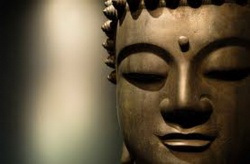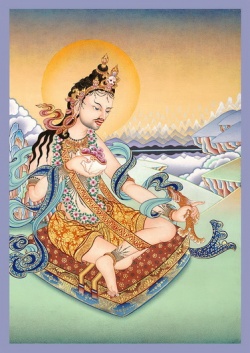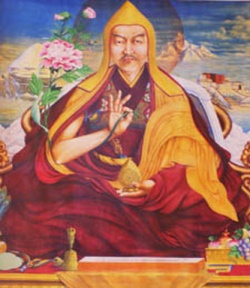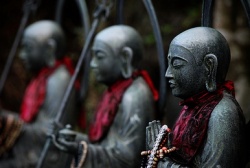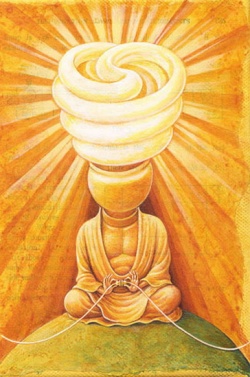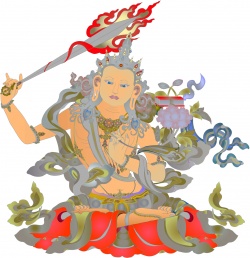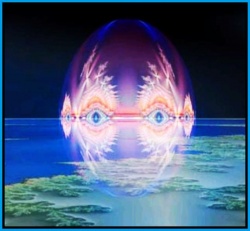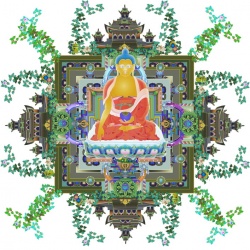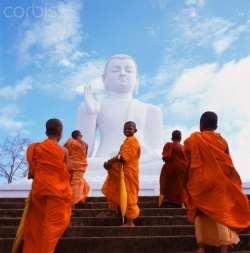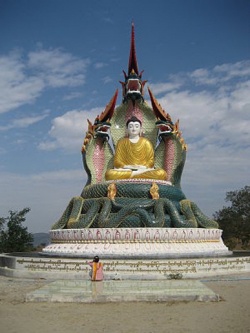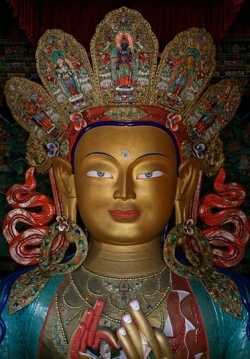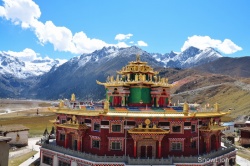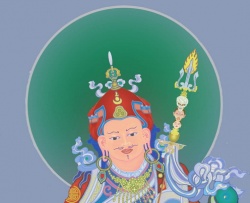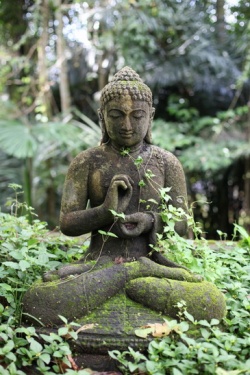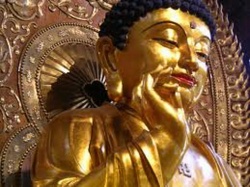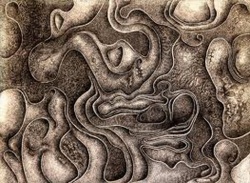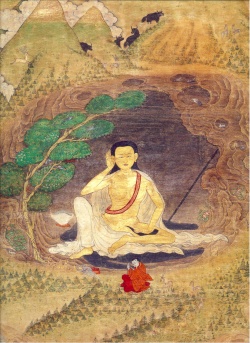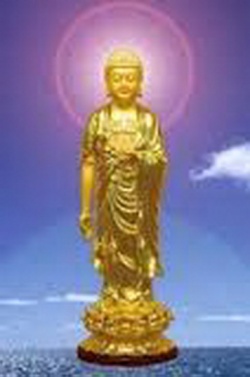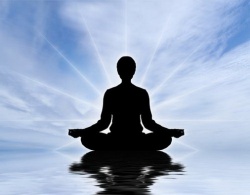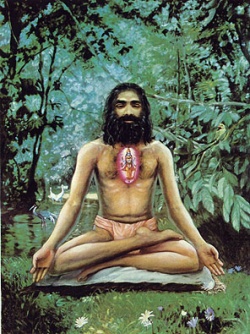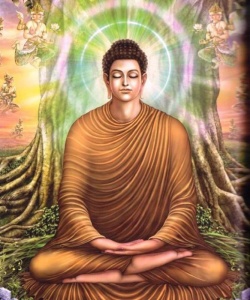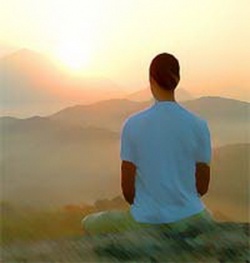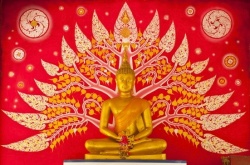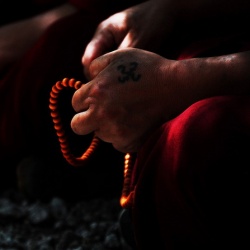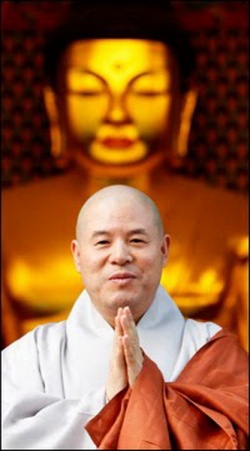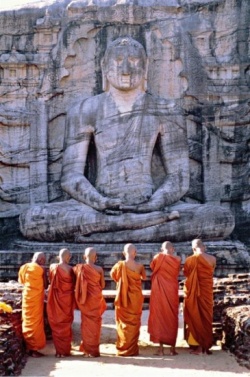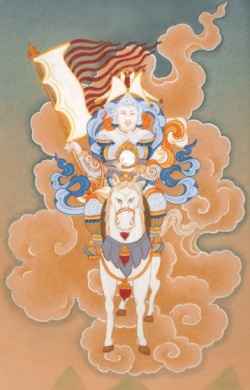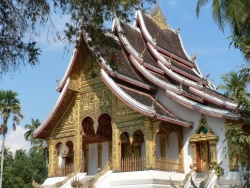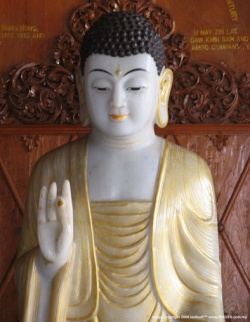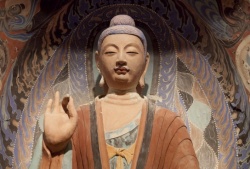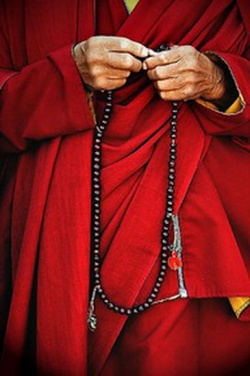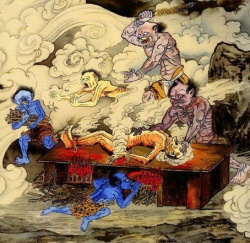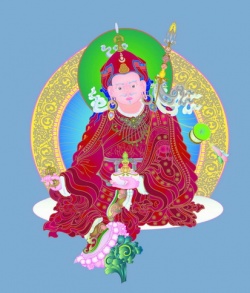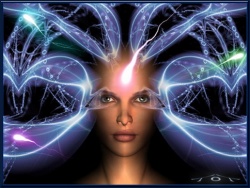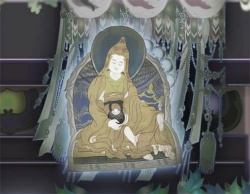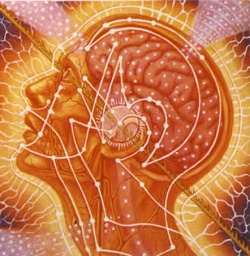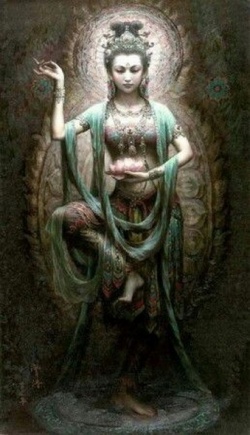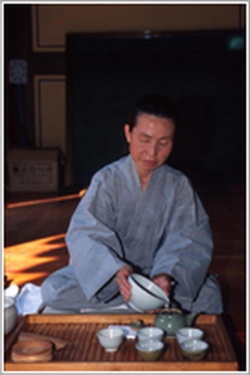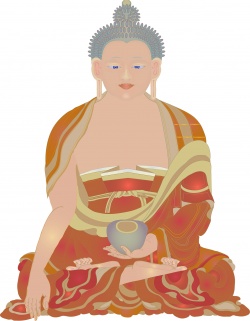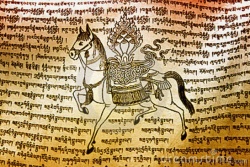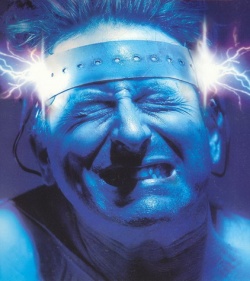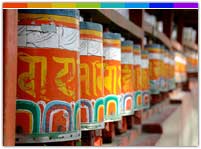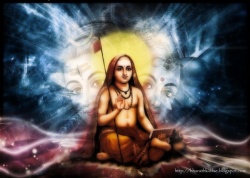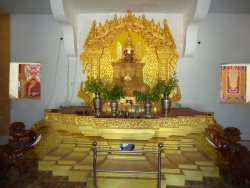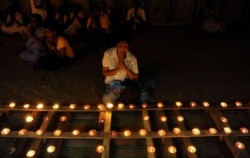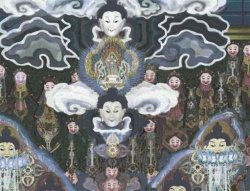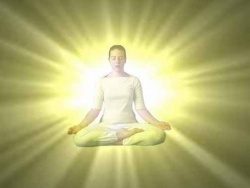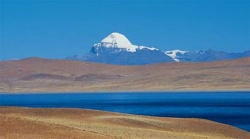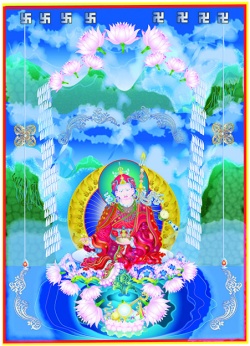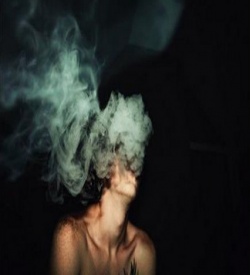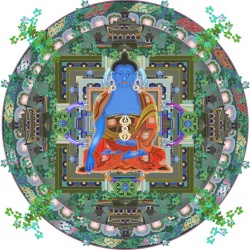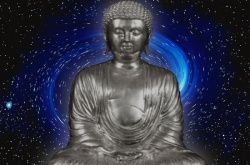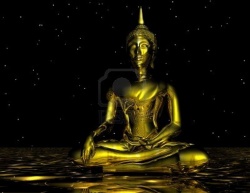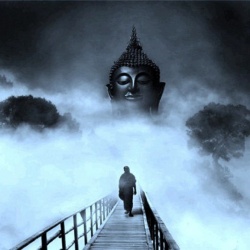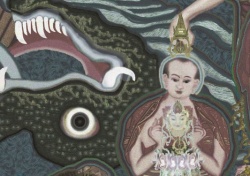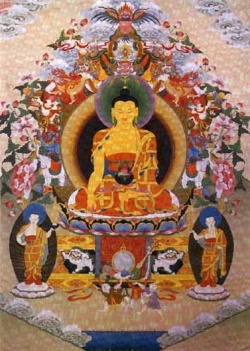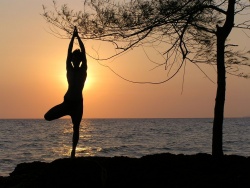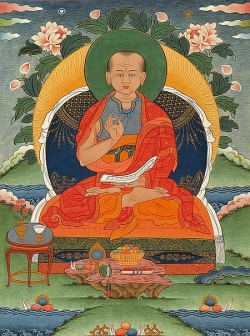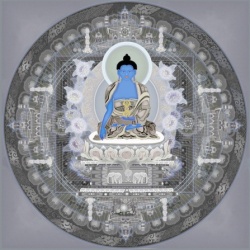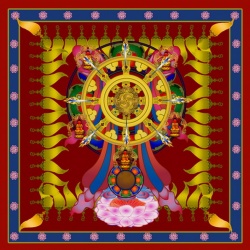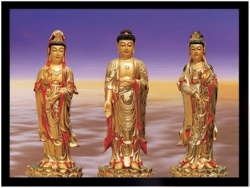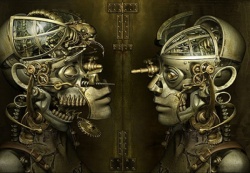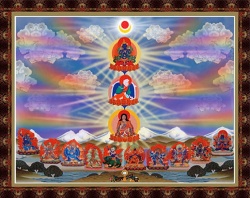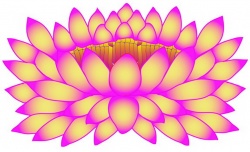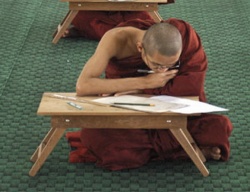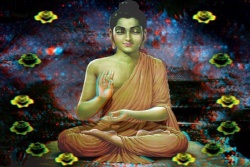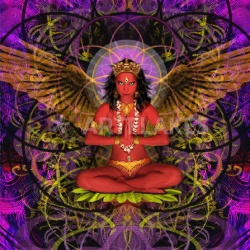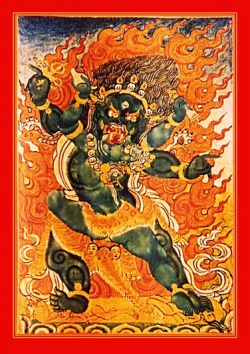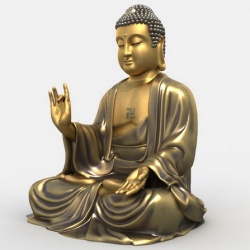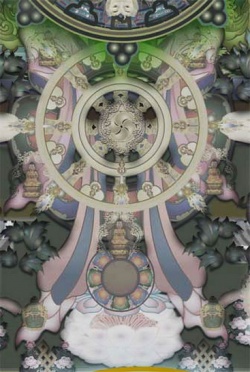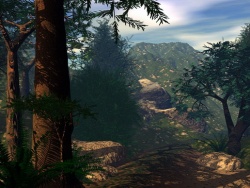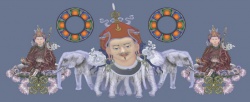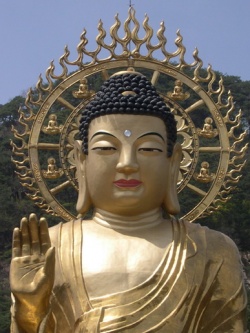The Four Planes of Existence in Theravada Buddhism
by Dr. Sunthorn Na-Rangsi
Buddhist Publication Society Kandy • Sri Lanka The Wheel Publication No. 462
For free distribution. This work may be republished, reformatted, reprinted and redistributed in any medium.
However, any such republication and redistribution is to be made available to the public on a free and unrestricted basis, and translations and other derivative works are to be clearly arked as such.
The Four Planes of Existence in Theravada Buddhism
Introduction
Chapter II. Sensual Happy Plane
Chapter III. The Plane of Form
Chapter IV. The Plane of the Formless
Conclusion
About the Author
Appendix: The Four Planes of Existence and Thirty-one Realms of Rebirth
The following essay on the four planes of existence is a general introduction to Buddhist cosmology, in specific to the different realms of rebirth.
Buddhist cosmology has played an important role in traditional Asian Buddhist practice and thought right since the Buddha started teaching. For example, one of the subjects of meditation the Buddha taught is the recollection of the qualities of the gods (devatanussati).
[1] Nevertheless, Buddhist cosmology has generally been unpopular with Western Buddhists who often find it difficult to come to terms with rebirth because of their materialistic background.
Since the final goal of the Buddha’s teaching is the cessation of rebirth, by putting an end to the kamma that leads to it, a basic knowledge about the different planes of rebirth and the types of kamma that lead to them is important.
For example, contemplating the impermanence and the suffering of the realms of rebirth makes one realize how fortunate one is to have been reborn in the human world, to have encountered the Buddhist teachings, and to be able to practice them.
The practice of the Dhamma is impossible or more difficult in other realms of existence unless one is a stream-winner. It will therefore lead to more urgency in one’s practice and a quicker realisation of the ultimate goal.
Dr. Sunthorn Na-Rangsi elucidates this complicated subject in a clear and accessible way and this essay is useful for both average readers and scholars alike.
In the original edition of this essay the references to Pali texts are to the Thai editions, but these are of no use to most non-Thais and therefore have been changed the refer to the Roman script editions of the Pali Text Society and their translations.
While searching for the corresponding references, sometimes related references information were found and these, sometimes together with some supplementary information, have been added in the footnotes, which are now entirely the work of the editor as there were only references in the footnotes of the original text.
Dr .Sunthorn Na-Rangsi regularly refers to a work that is popular in Thailand but virtually unknown and unavailable outside of it—the Paramatthajotika, a modern commentary on the Abhidhammatthasangaha composed by Phra Saddhammajotika, a Burmese Abhidhamma teacher in Bangkok.
The editor traced the quotations of this work in other Pali texts and put the references to these in the footnotes.
Tables describing the thirty-one different realms of existence have been included as an Appendix.
This essay was earlier published as Chapter IV (called “Rebirth and Planes of Existence”) of Dr. Sunthorn Na-Rangsi’s Karma and Rebirth (Bangkok, 1976) and has been republished by the BPS with the kind permission of the author.
Editor
Abbreviations
Abhidh-s
AN
Ap
Be
Burmese Chatthasangayana Edition
Bv
CMA
Comprehensive Manual of Abhidhamma. Ed. Bhikkhu Bodhi, Kandy 1992.
Dhp
Dhs
DN
DPPN
Dictionary of Pali Proper Names. Malalasekera, Oxford 1938.
It
Jataka Story
MN
Nidd
Pmd
Paramatthadipani (by Ledi Sayadaw)
PP
Path of Purification. Tr. Bhikkhu Ñanamoli, 3rd ed., BPS, Kandy 1975.
Pv
RE
Root of Existence. Tr. Bhikkhu Bodhi, BPS,
Kandy 1992.
SN
Sn
Sp-t
Saratthapakasini / Samantapasadika-tika
Th
Ud
Vibh
Vism
Vv
-a-
atthakatha (commentary)
References are to the volume and page number of the Pali Text Society (PTS) edition.
References to DN and MN give the number of the sutta; when followed by a dot and another number, e.g., MN 12.3, the latter number is the paragraph number.
References to AN and It are to the “book” or section (nipata) number and the sutta number, e.g., AN 4:3 is the fourth sutta of the “book of fours”. References to SN give the samyutta (“book”) and sutta number, e.g., SN 1:1 is the first sutta of the first samyutta. References to Dhp, Sn and Th are to the verse numbers.
References to J give the Jataka story number. References to Vism follow the chapter and paragraph number of Bhikkhu Ñanamoli’s translation of the work called The Path of Purification, 3d ed. (Buddhist Publication Society, Kandy, 1975).
Introduction
Buddhists believe that the human world is not the only world where living beings exist, but that there are many other planes of existence where some forms of life flourish.
These planes of existence, despite the fact that some of them are invisible to human eyes, are closely related to our world. They are places where rebirth takes place.
According to Buddhism, the nature of one’s future birth is conditioned by kamma performed in the present life.
From here one may, after death, go “upwards” to the plane of happiness or “downwards” to the realm of misery.
So far as kamma is concerned, our present world seems to be the centre of all other worlds and this present life is the determining factor of future lives.
Viewed from the point of view of rebirth, the human world and other worlds or planes of existence are reciprocally related.
Not only do the beings of this world pass away to take rebirth in other planes, but the beings of those planes also come to take rebirth in the human world.
The Pali Canon speaks of three planes of existence called bhava. The Pali term bhava literally means “becoming”, “state of existence” or “plane of existence”.
The three planes of existence are:
(1) kamabhava, the plane of desires,
(2) rupabhava, the plane of form, and
(3) arupabhava, the plane of the formless or incorporeal beings. [2]
In the Sammaditthi Sutta the Venerable Sariputta speaks of the cause, the cessation and the path leading to the cessation of bhava for each and every individual.
Attachment (upadana) is described as the cause of bhava.
Because of attachment one is to be reborn again after death, and because one is to be reborn, there is bhava.
The cessation of bhava is nothing but the cessation of attachment, which is its cause.
The Noble Eightfold Path is said to be the way leading to the cessation of bhava. [3]
In the Abhidhammatthasangaha the classification of the planes of existence is slightly different from that of the Pali Canon. Here the planes of existence are called bhumi. [4]
The Pali term “bhumi” literally means “ground, soil, plane, or stage”.
The Abhidhammatthasangaha classifies planes of existence into four sub-divisions:
(1) apaya-bhumi, the plane of misery,
(2) kamasugati-bhumi, the sensual happy plane,
(3) rupavacara-bhumi, the plane of form, and
(4) arupavacara-bhumi, the plane of the formless.
[5] The apaya-bhumi and kamasugati-bhumi are included in the sensual-plane (kamavacara-bhumi),
the plane of the beings whose consciousness is restless under the influence of diverse worldly desires.
Classification is made here merely to distinguish the plane of misery (duggati) from the plane of happiness (sugati).
Our consideration of the planes of existence will follow the classification as given in the Abhidhammatthasangaha.
The Pali Canon speaks of four types of birth in different planes of existence. [6]
The first type of birth is that of a being born from an egg (andaja).
Whatever being comes into life by breaking through an eggshell is called a “being born from an egg”.
The second type of birth is that of a being born from a womb (jalabuja).
The being born by breaking through a membranous sheath, like human beings, or some kinds of animals like cows, etc., belongs to this type of birth.
The third type of birth is that of the being born of moisture (samsedaja).
Whatever being is produced out of rotting fish or rotting corpses or in a dirty pool, is called a “being born of moisture”.
The fourth type of birth is that of spontaneous uprising (opapatika).
The devas or gods in heaven, and those who are born in hell belong to this type of birth.
We may roughly say that human beings belong to the second type of birth (jalabuja); some of the beings in the animal kingdom belong to the first type of birth (andaja),
some belong to the second type of birth or jalabuja, and some belong to the third type of birth (samsedaja);
the beings in heaven and in hell belong to the fourth type of birth (opapatika).
Plane of Misery
The first plane of existence is the plane of misery or apaya-bhumi.
It is where the doer of evil deeds is born after death to suffer the consequences of his wicked actions.
This plane is further divided into four sub-divisions according to different types of beings.
The four sub-divisions are:
(2) the realm of animals or tiracchanayoni,
(3) the realm of the hungry ghosts or petayoni and
(4) the realm of the Titans or asurayoni.
[7] These four realms of apaya-bhumi will be discussed separately.
1. Hell
The Pali term niraya is defined in the Paramatthajotika [8] as a place completely devoid of happiness. [9]
It is one of the four realms of misery where evildoers are reborn after death according to their evil kamma.
It is explained that the beings in niraya will never have even a single moment of happy feeling;
they have to suffer the painful results of their evil kamma from the beginning to the end of their lives in that realm.
There is no time limit for one who is born in hell. Some may have to suffer there for a short period of time and some for numberless years.
This depends on the power and efficacy of evil kamma done by each individual. [10]
But however long one may suffer in hell, life there is still temporary; one day, upon the exhaustion of the power of one’s evil kamma, one will be freed from the hellish suffering.
Bhikkhu Devadatta is an example in this connection. Because of his ill will and misdeeds directed towards the Buddha and the Sangha, he is said to have been born, after death, in the lowest hell called Avici.
It was prophesied by the Buddha that Devadatta, upon the exhaustion of his evil kamma after the lapse of a long period of time, would, as a result of his previous meritorious actions, become in the future a Pacceka-Buddha named Atthissara. [11]
In the Paramatthajotika, eight great hells (mahaniraya) are mentioned. [12]
They are said to be located under the realm of human beings.
The eight great hells are as follows [13] :
1. Sañjiva: It is explained that in this hell, the guardians of the hell (niraya-pala) chop and cut the hell-beings with glowing weapons.
But as long as their evil deeds remain unexhausted, they regain their lives after the punishment is over.
Hence this hell is called Sañjiva—’the reviver”.
2. Kalasutta: It is explained that the beings born in this hell are placed on a floor of heated iron, marked with a black thread, and made red hot. The guardians of hell then plane them with adzes along the markings and hence the name Kalasutta—”the black thread.”
3. Sanghata: This hell is so called because the beings born here are crushed into dust by glowing mountains.
4. Roruva or Dhumaroruva: This hell is so called because the beings born here are all the time crying with a loud noise, or because they have noxious gases blown into their bodies and painfully cry with a loud noise and hence the name Dhumaroruva.
5. Maharoruva or Jalaroruva: This hell is called Maharoruva because the beings born here are crying louder than the beings born in the Roruva hell, or it is called Jalaroruva because the beings born here have hellish flames blown into their bodies and they cry loudly.
6. Tapana or Cullatapana: It is said that the beings born in this hell are pierced by red-hot stakes and they remain transfixed, motionless as long as the results of their evil deeds last and hence the name.
7. Mahatapana: It is explained that the hell in which the beings are heated with more suffering than in the Cullatapana is called Mahatapana. The niraya-pala (hell-guardians) of this purgatory force the hell-beings to climb up a burning iron mountain and then they are slipped down by strong winds, falling to the red-hot stakes below. There they experience feelings that are painful, sharp, severe, as long as the power of their evil kamma lasts.
8. Avici: This great hell is the lowest and the most terrible of all. The chief suffering endured in this hell is that of heat. It is explained that there is no space between the beings and the flames and there is no gap of suffering experienced in this hell and hence it is called Avici—”gapless.”
It seems to have been specially designed for those who had committed very grievous crimes, such as the five great sins, etc.
In the Pali scriptures many names are mentioned as to those who had to suffer the fruition of their evil deeds done in their human life.
Among them are, for instance, Nanda, who raped his cousin, the Theri Uppalavanna; Devadatta,
who tried to assassinate the Buddha and caused a schism in the Order; Cunda, the pork butcher; Suppabuddha who insulted the Buddha; etc.
It is said that when Devadatta entered the great hell Avici, his body became one hundred leagues (yojana) in height; his head, as far as the outer ear, entered into the glowing iron ceiling and his feet entered into a glowing iron floor up to the ankles;
and an iron stake as big as the trunk of a palmyra tree coming from the west wall pierced him from the back through his breast entering the east wall.
Other similar stakes coming from the right wall pierced through his body entering the left wall and from the ceiling pierced his head penetrating through the whole body and entering the red-hot iron ground below.
Both of his hands were fixed with red-hot iron stakes. He is thus standing motionless amidst the hellish flames until his evil kamma is exhausted in the future. [14]
The above mentioned great hells are said to be located farther downwards respectively from the human world, the Sañjiva being the nearest and the Avici is the farthest or the lowest.
The hell-beings may undergo the severest punishments, but they will retain their lives as long as the power of their evil kamma lasts.
Apart from the eight great hells, the Paramatthajotika mentions also five small hells called ussada-niraya.
The Pali term ussada literally means “plenty” or ”abundance”. It is explained that suffering is abundant in these small hells. They are therefore called ussada. The ussada-niraya surround each great hell in four directions.
The Devaduta Sutta [15] describes the great hell as being square in shape encircled by an iron wall and covered by an iron roof; the floor is made of glowing iron of a hundred leagues square; there are four big gates in four directions.
Next to each gate in each direction are situated in respective order the five small hells or ussada-niraya.
The five small purgatories are:
(1) Gutha-niraya or the Filth Hell,
(2) Kukkula-niraya or the Ember Hell,
(3) Simpalivana-niraya or the Silk-cotton-tree Hell,
(4) Asipattavana-niraya or the Sword-leafed-forest Hell; and
(5) Vettarani-niraya or the Caustic River Hell.
Thus one great hell is surrounded in four directions by twenty small hells. Counted together the total number of hells becomes 168, i.e., eight great hells and 160 small hells.
But since each great hell is surrounded by five varieties of small hells, the same kinds of hells in the four directions may be counted as one and thus one great hell has only five surrounding small hells.
In this way the total number is 48—eight great hells and 40 small hells.
The ruler of the great hell is called yama (determiner) or yamaraja (determiner-king). [16]
But there is not only one yamaraja for one great hell; there are actually four yamarajas who are in charge of the four gates'.
Thus for eight great hells there are altogether thirty-two yamarajas. Apart from these yamarajas, there are a number of hell-guardians called niraya-pala.
The duty of the yamaraja is to consider the case of each hell-being and give orders for punishment; the hell-guardian’s duty is to inflict the penalties typical of each hell on the hell-beings.
Yamaraja and niraya-pala are actually not hell-beings, but belong to the heaven of the Four Great Kings or Catumaharajika.
They are described as vemanikapeta, the beings that sometimes enjoy the fruitions of their meritorious kamma in heaven and sometimes suffer the results of their evil deeds in hell.
Because of particular kinds of kamma they are sent to perform their duties in this realm of misery by inflicting penalties on the hell-beings. [17]
It is said in the Devaduta Sutta that the hell-guardians seize the person who has just passed away from the human world and present him to the yamaraja, saying:
“This man, sire, has no respect for his mother, no respect for his father; he does not honor recluses; he does not honor Brahmins; he does not pay due respect to the elders of the family. Let your majesty decree a punishment for him.”
Then the yamaraja cross-questions him, asking about the five divine messengers (devaduta).
The five divine messengers are:
(1) a newly born baby,
(2) an aged man or woman,
(3) a sick person,
(4) a person subjected to various punishments, and
(5) a dead man or woman.
The yamaraja questions him about these five divine messengers one by one respectively.
In asking about the fifth messenger, for instance, he says:
“My good man, did you see the fifth divine messenger who appeared among men.”
He replies: “I did not see him revered sir.”
The yamaraja speaks to him thus: “My good man, did you not see among men a woman or a man dead for one, two or three days, swollen, discolored, decomposing?”
He replies: “I saw this, revered sir.” Then yamaraja says: “My good man, although you are sensible and grown up, did it not occur to you that you too were liable to death, that you had not outstripped death and that you should do what is lovely in body, speech and thought?”
He speaks thus: “I was not able, revered sir. I was indolent, revered sir.”
Yamaraja then speaks to him: “If it was because of indolence, my good man, that you did not do what is lovely in body, speech and thought, they will undoubtedly deal with you, my good man, in accordance with that indolence.
For this evil deed is yours; it was neither done by your mother, nor by your father, nor by your brother, nor by your sister, nor by your friends and acquaintances, nor by kith and kin, nor by recluses and brahmins, nor by gods.
This evil deed was done by you; it is you yourself that will experience its ripening.”
Yamaraja, having thus spoken, remains silent.
The guardians of the hell then subject him to what is called the fivefold pinion. They drive a red-hot iron stake through each hand and each foot and a red-hot iron stake through the middle of his breast. There he experiences feelings that are painful, sharp and severe. But his term does not expire until an end is made of his evil kamma.
Then the guardians of the hell lay him down and plane him with adzes. There…
Then the guardians of the hell place him feet up and head down and plane him with razors. There…
Then the guardians of the hell bind him to a chariot and drive him up and down over ground that is burning, aflame, ablaze. There….
Then the guardians of the hell push him up and down a great mountain slope of glowing cinders, burning, aflame, ablaze. There….
Then the guardians of the hell take him feet up and head down, and plunge him into a glowing brazen cauldron, burning, aflame, ablaze. There he is boiled and rises to the surface with the scum. Boiling there and rising to the surface with the scum, he once comes up and once goes down and once he goes across. There he experiences feelings that are painful, sharp and severe. But his term does not expire until an end is made of his evil kamma. Then the guardians of the hell toss him into the [[great [hell]].”
The Devaduta Sutta describes the penalties inflicted on the hell-beings in the great hell (mahaniraya) as follows:
“The flames that leap up by the eastern wall of this great hell are hurled against the western wall; the flames that leap up by the western wall are hurled against the eastern wall; the flames that leap up by the northern wall are hurled against the southern wall; the flames that leap up by the southern wall are hurled against the northern wall; the flames that leap up from below are hurled above, the flames that leap up from above are hurled below. There he experiences feelings that are painful, sharp, severe. But he does not expire his term until his evil kamma has become exhausted.
There comes a time after the lapse of a very long period when the eastern gateway of this great hell is opened. That being rushes there swiftly and speedily; while he is rushing swiftly and speedily his skin burns and his hide burns and his flesh burns and his tendons burn and his eyes are filled with smoke—such is his plight.
When at long last he reaches the gateway, then it is nevertheless closed against him. There he experiences feelings that are painful, sharp, severe. But he does not expire his term until he makes an end of his evil kamma.
There comes a time after the lapse of a very long period when the western gateway… the northern gateway… the southern gateway of this great hell is opened. He rushes there swiftly and speedily; while he is rushing swiftly and speedily his skin burns… the gateway is nevertheless closed against him. There he experiences feelings that are painful, sharp, severe. But he does not expire his term until his evil kamma has become exhausted.
There comes a time after the lapse of a very long period when the eastern gateway of this great hell is opened. He rushes there swiftly and speedily… such is his plight. He issues forth by this gateway.
However, surrounding this great hell is the Filth Hell (gutha-niraya). He falls into it. And in the Filth Hell needle-mouthed creatures cut away his skin; having cut away his skin they cut away his hide…his flesh… his tendons… his bones; having cut away his bones, they devour the marrow of the bones. There he experiences feelings that are painful, sharp, severe. But he does not expire his term until his evil kamma has become exhausted. And surrounding this Filth Hell is the Ember Hell (kukkula-niraya). He falls into it. There he experiences feelings that are painful, sharp, severe. But he does not expire his term until his evil kamma has become exhausted.
And surrounding this Ember Hell is the Silk-Cotton Trees Forest (simpalivana) towering a league (yojana) high with prickles of sixteen finger-breadths long, burning, aflame, ablaze. The hell guardians make him climb up and down. There he experiences feelings that are painful, sharp, severe. But he does not expire his term until his evil kamma has become exhausted.
And adjacent to that Silk-Cotton Trees Forest is the great Sword-Leafed Forest (asipattanavana). He enters it. Its leaves, stirred by the wind, cut off his hands and cut off his feet and cut off his hands and feet… ears… nose, and cut off his ears and nose. There he experiences feelings that are painful, sharp, severe. But he does not expire his term until his evil kamma has become exhausted.
And adjacent to that Sword-Leafed Forest is the great River of Caustic Water (kharodaka-nadi). He falls into it. There he is carried with the stream, against the stream and with and against the stream. There he experiences feelings that are painful, sharp, severe. But he does not expire his term until his evil kamma has become exhausted.
The guardians of the hell haul him out with a fish-hook, set him on dry ground and speak thus to him: “My good man, what do you want?”
He replies: “I am hungry, revered sirs.”
The guardians of the hell, opening his mouth with a glowing iron spike, burning, aflame, ablaze, then push into his mouth a glowing copper pellet, burning, aflame, ablaze. It burns his lips, his mouth, his throat, his chest and it passes out below taking with it his bowels and intestines. There he experiences feelings… But he does not expire his term until his evil kamma has become exhausted.
Then, the guardians of the hell ask him: “My good man, what do you want?”
He speaks thus: “I am thirsty, revered sirs.”
The guardians of the hell, opening his mouth… pour glowing copper liquid into his mouth…
There he experiences feeling …. But he does not expire his term until his evil kamma has become exhausted. Then, the guardians of the hell toss him back again into the great hell.”
The Great Hell as described in the Devaduta Sutta is probably the Avici-mahaniraya since the chief suffering endured in this hell is that of heat.
But the Avici-mahaniraya seems to consist of more than one great hell and five small hells as appears in the Devaduta Sutta.
The Venerable Saddhammajotika in his Paramatthajotika, quoting the commentary on the Samyutta Nikaya and Anguttara Nikaya [18] , says that there are twelve different hells under the common name avici:
(1) Pahasa,
(2) Aparajita,
(3) Ambuda,
(4) Nirabbuda,
(5) Ababa,
(6) Ahaha,
(7) Atata,
((8) Kumuda,
(9) Sogandhika,
(10) Uppala,
(11) Pundarika,
(12) Mahapaduma or Paduma.
The last one or Paduma-niraya is known as where Bhikkhu Kokalika —a close friend of Devadatta, who falsely accused the Venerable Sariputta and Moggallana of having a wicked thought—was born after his human life. [19]
In the small hells (ussada-niraya), apart from suffering caused by the nature of punishment particular to each hell, the hell-beings are said to suffer also from the attack of four kinds of hell beasts: giant vultures, giant crows, giant hawks and giant dogs. These animals are said to be very fierce and will furiously attack the hell-beings at first sight. [20]
Among the four realms of the plane of misery (apaya-bhumi), niraya appears, as we have seen, to be the most horrible of all. The birth of the being in hell is spontaneous (opapatika) and is purely brought about by evil kamma. The body of the hell-being may be completely destroyed by hellish punishment, but as long as his evil deeds have not been recompensed it will always be created anew. [21] It is said that when the power of evil kamma becomes weaker he will be free from the great hell, but he still continues to suffer in the small hell (ussada-niraya).
During this period, if his meritorious kamma performed in the past is very powerful, he may immediately move from hell and assume rebirth in heaven or in the realm of human beings. If, on the other hand, his evil kamma still remains, but not strong enough for his suffering in hell, he may move from there and take rebirth in the realm of the hungry ghost (peta) or as an animal, whatever will suit the case.
Animal Realm
Buddhism regards animal existence as a state of life belonging to the plane of misery or apaya-bhumi.
It maintains that there is no certainty in the state of being, a man may be reborn as an animal, and vice versa or an animal may attain the state of divine being in heaven and the divine being may be degraded and be reborn as an animal.
This depends on the kamma performed by each individual in his previous and present life. Whatever action has been done by him, he himself is to receive its consequences. As the Buddha said:
“Owners of their kamma are living beings, heirs to their kamma, have kamma as the wombs from which they spring, have kamma as their kinsmen, have kamma as their refuges. Whatsoever kamma they will do, be it wholesome or unwholesome, of that they will be the heirs.” [22]
Now, what type of person will attain, after death, animal birth? To this question we find the answer in the Anguttara Nikaya [23] where the Buddha is reported to have said:
“Some person in this world, bhikkhus, takes life, he is a hunter, bloody-handed, given over to killing and slaying, void of compassion for all living creatures… takes what is not given… commits adultery… is a liar, a slanderer, of harsh speech, of idle babble… covetous… of harmful thoughts… of wrong view….
He goes crookedly in body, crookedly in speech, crookedly in mind.
His physical action is crooked, verbal action is crooked and mental action is crooked; crooked in his bourn and crooked in his rebirth. I declare, bhikkhus, any one of the two bourns, viz., a woeful state of hell or birth as an animal that creeps crookedly along, for him whose bourn is crooked and whose rebirth is crooked.
Of what sort, bhikkhus, is that animal birth, one that creeps crookedly along. It is of a snake, a scorpion, a centipede, a mongoose, a cat, a mouse, an owl or whatsoever other animal, one that goes stealthily on seeing human beings.”
In the Jataka we are told that the Buddha himself had been born as an animal in many of his previous births. Thus, for ordinary men like us it is no doubt that in the course of our wandering in samsara we might have been born as an animal, since no one who is still in bondage has never performed evil deeds in the past.
Some modern Buddhists, however, are of the opinion that it is not possible for a well-developed being like man to be reborn as a low creature like an animal. This view is definitely not in accordance with the Buddha’s teachings and it will never be accepted by a serious Buddhist.
From the Buddhist point of view, the interchange of beings between the plane of misery and the plane of happiness is a common phenomenon in the world of samsara.
Buddhism maintains that only one who has attained the holy stages ranging from the Stream-Enterer (sotapanna) to the Non-Returner (anagami) will be no more reborn as an animal. [24]
There is nothing to be said about one who has attained the stage of Arahat-ship, as the root-cause of his rebirth has been totally uprooted. However, for the worldly man (puthujjana) like us, rebirth in the plane of misery, e.g., as an animal, as a hell-being, etc., is as possible as rebirth in the plane of happiness.
The animal kingdom, unlike other realms, is in the same world as human beings. It is not difficult to see the reason why Buddhism regards animal birth as a state of life included in the plane of misery.
First of all, there is no morality in the animal kingdom; animals live according to the wild law of nature.
Among animals, the strongest is the survivor; the bigger eats the smaller. Danger to life is the crucial problem for them; it may come at any moment from animals themselves as well as from human beings.
They have to struggle hard for their survival, especially for food which is not always certain. Sometimes they have enough to eat, but sometimes they have to starve for many days.
Moreover, they have to bear nakedly the hot and cold, the wet and dry seasons of the year without proper protection.
With all these difficulties, animal life, although it is not as much suffering as that of the beings in hell, is rationally included as one of the miserable existences. [25]
Another reason why Buddhism includes animal birth in the apaya-bhumi is that whosoever, because of his evil kamma; attains the birth of animal is naturally obstructed from realising the ultimate truth, from following the path of virtue which leads to emancipation.
This is because animal existence is the negation of such realisation and practice. Lacking the capacity for realizing the ultimate truth is considered critical since such realisation is the prime aim of life that we struggle for.
Realm of Unhappy Ghosts
Pettivisaya literally means “the realm of the unhappy ghosts (peta).” It is a realm included in the plane of misery according to Buddhism.
It is said that there is no particular place for the petas to live; they live in the same world as human beings, such as in forests, on mountains, on islands, in cemeteries, etc.
However, since they belong to a different realm of existence they are, therefore, invisible to human eyes.
They may be seen only when they want themselves to be seen by human beings.
Another means of seeing the petas is by clairvoyance (dibbacakkhu) developed by meditation.
The Paramatthajotika quotes the commentary on Petavatthu [26] and mentions four kinds of peta, namely,
(1) paradattupajivika-peta (peta who lives on the gifts of others),
(2) khuppipasika-peta (hungry and thirsty peta),
(3) nijjhamatanhika-peta (peta consumed by craving), and
(4) kalakañcika-peta [27] (black-eared peta).
The paradattupajivika-peta (peta who lives on the gifts of others) is an unhappy ghost who lives on the dakkhina or sacrificial offerings of others.
It is because of this type of peta that Buddhism encourages its followers to perform a merit-making by offering food, clothing, shelter, etc., to virtuous persons, such as a bhikkhu or a group of bhikkhus, and then to dedicate the merit acquired there from to deceased relatives.
This is done on the basis of the belief that if the deceased relatives have attained the life of the paradattupajivika-peta, their suffering, on the appreciation of the sacrifice done and dedicated to them, will be abolished and they will thereby attain to the plane of happiness.
This belief is affirmed by many stories of the petas, which appear in the Petavatthu of the Pali Canon.
In one story, for instance, it is said that the Venerable Sariputta came across a female peta appearing as an ugly, bony-thin and naked woman. The Elder questioned her and she replied that she was a peta born in the miserable peta-world.
She reported that when she was a human being neither her father, mother nor relatives persuaded her to perform any good kamma like giving alms, observing precepts, etc.
Because of lacking such meritorious deeds she was, after her human existence, consequently born as an unhappy peta tortured by hunger and thirst for five hundred years.
At last, she begged for help from the Venerable Sariputta.
The Elder accepted her request and later offered a certain amount of food, a small piece of cloth, and water to one bhikkhu. He particularly dedicated that offering (dakkhina) to that peta.
On appreciating the offering specially consecrated to her, she immediately acquired food, clothes and other properties and became released from suffering.
Having attained the state of a celestial being, she came and appeared before the Venerable Sariputta.
Being unable to recognise her, the Elder asked her who she was. The devadhita (goddess) informed him and said that she had come to pay her homage to him. [28]
The peta in the above story was obviously a paradattupajivika-peta. It should be noted here that according to Buddhism only the peta of this sort are able to enjoy the outcome of an offering dedicated by their relatives.
The peta of other sorts are not affected by such a dedication. [29]
The offering (dakkhina) will become fruitful to the peta, however, only when three conditions are met.
The three conditions are:
(1) the offering is given to a virtuous person;
(2) the performer of the offering dedicates it particularly to his deceased relative; and (3)
his deceased relative has been born as a paradattupajivika-peta and that peta knows and appreciates that offering particularly consecrated to him. [30]
If any of these three conditions is lacking, the deceased relative will not be able to enjoy the outcome of the offering.
But whatever the case may be, the performer of the offering will never be without the result of his meritorious action.
The second kind of peta is the khuppipasika-peta (hungry and thirsty peta).
This sort of peta suffers from hunger and thirst.
The offering dedicated by relatives in the human world cannot bear fruit to one born as this kind of peta.
He will suffer in the peta-realm as long as his evil kamma lasts.
The third kind of peta is the nijjhamatanhika-peta (peta consumed by craving).
The suffering of this sort of peta is caused by his own craving or tanha.
It is said that fire burns in his mouth all the time and this results in his burning desire which can never be fulfilled.
He will continue to suffer in the peta-world unless and until his evil kamma performed in the past becomes exhausted.
The fourth kind of peta is the kalakañcika-peta (black-eared peta).
It is explained that this sort of peta has a body three leagues (yojana) tall.
However, his body appears to be like a dry leaf with only skin covering the skeleton; his eyes protrude like those of the crab and his mouth is extremely small. He suffers from hunger and thirst like the other types of peta.
The Paramatthajotika also mentions many other types of peta, but after careful consideration we may conclude that the differences between the beings in the peta-world are characteristically dependent on the particular nature of the evil kamma formerly performed by each peta.
One peta is always different from the others in the way and manner of suffering and this different is solely determined by the peta’s particular evil kamma.
Another type of peta which should also be mentioned here is the vemanika-peta (a peta who has a celestial palace). [31]
According to the Buddhist texts [32] , this peta appears at night as a god of the lower grade, enjoying the fruition of his previous good kamma in a celestial palace called vimana.
However, during the day his previous evil kamma forces him to leave his happy vimana and suffer its unhealthy result at a certain place until the end of the day when he then returns to his celestial residence.
His cycle of life will continue in this way unless and until his previous evil kamma has been recompensed. Since one half of his life is spent in happiness in the vimana and the other half in the painful experience of the peta, hence he is called vemanika-peta.
We are further told that there is no certain limit or duration to existence in the realm of the peta. [33]
One may suffer in this miserable world for a very long period of time and another may exist there only for a number of days.
This is because existence in the peta-world is solely determined by evil kamma previously performed by each individual.
In the human world one may pass away due to the expiration of life, but in the peta-world the end of life occurs only with the exhaustion of evil kamma. [34]
This realm is included in the plane of suffering (duggati) because life there is dominated entirely by the suffering of pain and torture.
Realm of the Titans
The last type of birth included in the plane of misery is birth as a Titan or asura. The being called asura here is to be distinguished from the devasura (deva-asura) who does not exist in the plane of misery.
The devasura (god-titan) is a class of god belonging to the same realm of Tavatimsa heaven.
Vepacitti is said to be the king of this sort of asura. [35]
The devasura is definitely not included in the type of being in the plane of misery. Only the peta-asura and niraya-asura are accounted as beings of the apaya-bhumi.
The Paramatthajotika [36] says that the being which is called asura or asurakaya of the apaya-bhumi is but the kalakañcika-peta (black-eared peta), one of the four sorts of peta we have already considered. [37]
These kalakañcika-peta have, like other sorts of peta, no particular place of their own; they live in the human world, i.e., in forests, in the sea, on islands, in valleys, etc.
The niraya-asura (hell-titan) is described as a type of hell-being. They have a particular realm of their own called Lokantarika-niraya (World-interspace Hell).
This type of niraya is said to be situated between each three world-spheres (cakkavala). [38]
In between these three worlds there is a dark sea of acid water surrounded by rocky mountains. This sea is covered with eternal darkness; no ray of light can reach this place.
The creatures of the World-interspace Hell hang themselves on cliffs like bats. They are tortured by hunger and thirst as there is no food for them.
While moving along the cliff they sometimes come across each other. Thinking that they have come across food, they jump upon each other and start fighting. As soon as they start fighting, they let loose their grip on the cliff and as a result they fall into the sea below and their bodies melt away just like salt melting away in water. [39]
It is explained that the creatures of the Lokantarika-niraya are called “asura” because their lives are contrary to the gods in the Tavatimsa heaven who are called “sura”, i.e., life in Lokantarika-niraya is entirely unpleasant while that of the Tavatimsa gods is entirely pleasant.
The reason why the asura or asurakaya is spoken of separately as another sort of being in the plane of misery is probably because this type of creature possesses special characteristics unlike other beings of the peta world.
Now, we have seen that in the plane of misery (apaya-bhumi) there are four principal births:
birth as a hell-being,
as an animal,
as a peta or hungry ghost, and
as an asura.
Among these four sorts of beings, the three principal births, namely,
the birth of the hell-being, the peta and the asura, belong to what is called spontaneous uprising (opapatika). The birth of animals varies from one type to another according to its kind, i.e., some kinds belong to the andaja (born from eggs) some belong to the jalabuja (born from a womb) and some belong to samsedaja (born from moisture).
All these four principal births are brought about entirely by evil kamma and hence they are regarded as miserable existences.
Sensual Happy Plane
The second plane of existence to be considered here is the sensual happy plane or kamasugati-bhumi. The Pali term kamasugati-bhumi can be translated as “the plane of happiness connected with desires.”
This implies that the life of the being born in this plane is mainly dominated by the influence of diverse worldly desires.
The happiness of the beings of this plane arises from the six sense-object contacts generally termed as sensual pleasures.
The desire to acquire this type of pleasure is the common characteristic of all beings of the sensual happy plane.
According to Buddhism, there are actually twenty realms of happy existence.
These twenty realms are distinguished into three groups in accordance with their common characteristics:
(1) the [[sensual [happy plane]] (kamasugati-bhumi),
(2) the plane of form (rupavacara-bhumi); and
(3) the plane of the formless (arupavacara-bhumi). The plane of form and the plane of the formless will be discussed later.
The kamasugati-bhumi, the sensual happy plane, is classified into seven realms:
(1) the realm of human beings and the other six being the six realms of the sensual-plane (kamavacara) heavens, viz.,
(2) Catumaharajika,
(3) Tavatimsa,
(4) Yama,
(5) Tusita,
(6) Nimmanarati and
(7) Paranimmitavasavatti.
This classification is hierarchically arranged from the lowest to the highest realm respectively. [40]
Birth or rebirth in these seven realms is conditioned by meritorious kamma.
The Realm of Human Beings
Buddhism regards human existence as one of the twenty happy existences. In human beings the degree of happiness varies from one individual to another. This depends on one’s kamma, which affects one’s life.
One is born rich and another is born poor; one is born blind or deaf and dumb and another is born normal. Although the abnormal seems to be less happy than the normal, no one can deny that the abnormal individual has a chance to be happy.
As long as his body is capable of sense-object contacts, even though not through all of his senses, he is still capable of enjoying sensual pleasures.
The beggar appears to experience more suffering than happiness, but he still has a chance for worldly pleasures in his life.
In the human world, however lofty or humble one’s life is, happiness is always possible and this is one reason why it is regarded as one of the twenty realms of happy existence.
The main reason the realm of human beings is regarded as one of the sensual happy plane (kamasugati-bhumi) is that human birth is the result of meritorious kamma.
And everyone born as man, however high or humble his birth may be, has an equal chance of realising the ultimate truth and attaining emancipation.
Moreover, although the human world is the lowest of all the happy realms of existence, it possesses many significant characteristics that many other realms do not have.
Firstly, it is the realm situated between the plane of misery (apaya-bhumi) and the higher realms of happiness, the worlds of the gods (devaloka).
In this sense it may be said to be the centre of all realms from which man may go “upwards” or “downwards” after death according to the nature of his kamma. S
econdly, it is the only realm where the life of a recluse, an ethical life that leads directly to the realisation of the ultimate truth, is made possible.
Thirdly, it is where the fulfilment of the ten perfections (dasa-parami) of the Buddha-to-be or Bodhisatta is made possible.
Fourthly, it is the only realm where the Bodhisatta attains to Buddhahood and preaches the ultimate truth to the world.
With all these significant characteristics, the human world may be regarded as the most important realm of happy existence although happiness here is mixed with suffering.
As regards the kinds of kamma which cause rebirth in the realm of human beings, an explanation can be found in the Anguttara Nikaya where the Buddha is reported to have said to his disciples:
“There is, O bhikkhus, someone in this world who only on a small scale performs meritorious action founded on charity (dana), only on a small scale performs meritorious action founded on virtue (sila) and does not perform meritorious action founded on mind-development (bhavana). He, on the dissolution of the body after death, is reborn among men of ill luck.
There is, O bhikkhus, someone in this world who performs meritorious action founded on charity to a medium degree, performs meritorious action founded on virtue to a medium degree and does not perform meritorious action founded on mind-development. He, on the dissolution of the body after death, is reborn among men of good luck.” [41]
The above passages clearly show that charity (dana) and virtue (sila) are the determining factors in bringing about rebirth in the realm of human beings.
These two kinds of wholesome action still have their roles to play in conditioning more or less happiness and prosperity in a man’s life after birth according to the degree of their power and efficacy.
But, since circumstances in human life are more complicated, other kinds of wholesome and unwholesome actions performed in his previous birth also fruit for him who has been born as a human being. [42]
Heaven of the Four Great Kings
Catumaharajika is the name of the lowest realm of the twenty-six heavens.
It is so called because this heaven is ruled by the Four Great Kings in four different directions, i.e., in the East, in the South, in the West and in the North.
The problem arises about the centre of this realm, which divides the regions of the Four Great Kings.
The Paramatthajotika mentions a mountain called Sineru as the centre of this heaven. [43]
However, at present we cannot locate any mountain by this name anywhere in the world. It is said that Sineru is the highest mountain in the world and it may therefore be the highest peak of the Himalaya range called Everest at present.
In the Atanatiya Sutta [44] we are informed that a Devaraja called Dhatarattha rules over the eastern region of Catumaharajika heaven. He is the king of the gandhabbas.
A Devaraja named Virulhaka rules over the southern region; he is the king of the kumbhandas.
In the western region a Devaraja named Virupakkha is the ruler and he is the king of the nagas.
In the northern region a Devaraja named Kuvera or Vessavana is the ruler; he is the king of the yakkhas.
These Four Great Kings are also said to be the protectors of the human world and thus they are sometimes called lokapala—the protectors of the world. [45]
It should be noted that each of the Four Great Kings rules over one type of god of the Catumaharajika heaven. [46]
The gandhabbas, the attendants of King Dhatarattha, are described as the god-musicians.
They are said to be well-versed in music. Pañcasikha, whose name is often mentioned in the Pali scriptures, belongs to the Gandhabba community.
He always goes with his yellow lute (vina) in his hand.
The kumbhanda is described as a type of being with a big belly and big red eyes. [47]
As the retinue of King Virulhaka, their duty is to take care of forests, mountains, underground riches, hidden treasures, etc.
The nagas, the inhabitants under King Virupakkha’s administration, are another type of celestial being in the Catumaharajika heaven.
Naga literally means “snake”, but as the inhabitants of this heaven, they are demigods endowed with divine power.
The yakkhas are the retinue of King Vessavana.
They are also a type of god inhabiting this heaven.
In the Janavasabha Sutta [48] it is said that King Bimbisara of Magadha was born after his human existence as a high ranking yakkha of this realm.
In the Paramatthajotika, distinctions are made among the three types of gods of the Catumaharajika heaven according to the nature of their residences (vimana).
The three types of gods:
(1) bhummattha-devata or gods living on the ground,
(2) rukkhattha-devata or gods living in trees and
(3) akasattha-devata or gods living in the sky. [49]
The ground-gods or bhummattha-devata are said to reside on mountains, in pagodas, in public houses like temples, etc.
They do not have palaces (vimana) of their own.
The tree-gods or rukkhattha-devata are distinguished into two types, one being those who have palaces of their own on the tops of trees and the other being those who have no palaces (vimana) but reside in trees.
Since their residences are in connection with trees, when those trees are chopped down they have to shift to other unoccupied ones.
The akasattha-devata or the gods living in the sky are said to have vimanas of their own.
The magnificence of their palaces varies from one to another, depending on the karmic results of the owners. [50]
It should be noted that the Catumaharajika heaven is actually on the same level as the human world. It may be regarded as a sub-world which is invisible to human eyes.
The reason for its invisibility is that it belongs to a different realm of existence. The birth of a being in this realm is, as is birth in all the other realms of happiness, conditioned by meritorious kamma.
In the Anguttara Nikaya [51] we are told that the age of the beings in the Catumaharajika heaven is about five hundred divine years. Fifty years in the realm of human beings is equal to a single day and night of that realm; thirty such days and nights make one month; twelve such months make a year.
Five hundred years of that realm are, therefore, equal to nine million years in the human world.
However, it should not be understood that all beings of this heaven always live long, up to the expiration of their span of life.
The life of the beings in every realm of existence is actually the same as that of human beings, i.e., some may die at a young age, some may live up to middle age and then die, and some may pass away at the expiration of their span of life.
This depends on the power and efficacy of the kamma done by each individual which governs and determines the nature and duration of his life in the plane where he is born. [52]
Heaven of the Thirty-three
The second realm of the sensual-plane (kamavacarabhumi) heaven and the third realm of the plane of happiness is the Tavatimsa heaven. The term ”tavatimsa’ means “thirty-three”.
This heaven is named after the number of a group of people who collectively performed meritorious kamma and who were born after death in this realm of happiness.
According to the legend, [53] it is said that once in the far past there was a group of thirty-three men in a village called Macalagama.
The leader of the group was a young man named Magha.
These thirty-three men collectively dedicated their efforts to the happiness and well-being of other people.
They built and repaired roads, dug wells and ponds at road-sides for travelers who needed water, built rest houses at cross-roads, etc.
They passed their whole life with such wholesome actions and on the dissolution of their bodies, after death, they attained to this third realm of happiness.
The leader of the group became the ruler of this heaven and acquired the name Sakka or Indra.
His thirty-two friends were reborn as high ranking gods.
Since the thirty-three friends were born in this realm, it is, therefore, called Tavatimsa or the heaven of the Thirty-Three Gods.
In fact, there are many other gods who attained to this realm before and after the thirty-three friends, but when Magha was born here, because of his excellent virtues and marvellous meritorious kamma, he acquired supreme power and became the ruler of the realm.
The Tavatimsa heaven is said to be situated on the top of Sineru mountain. [54]
It is just above the Catumaharajika or the heaven of the Four Great Kings. At the middle of this realm there is a city called Sudassana.
The palace or vimana of Sakka the Devaraja, called Vejayanta, [55] is in the eastern part of the city.
In the city there are many parks, lotus ponds and flower gardens which serve as the places of enjoyment and recreation of the gods in Tavatimsa heaven.
There is also a Parijata (or Parichattaka) Parijata tree, which is the landmark of this realm, and an assembly hall called Sudhamma serving as the meeting place of the Tavatimsa gods.
It is explained that all gods and goddesses in this heaven are always in their youthful stage of life.
No old age, sickness and disfigured parts of the body appear among them.
Their foods are so subtle that no excretions are produced from their bodies.
Their birth in heaven is one of spontaneous uprising (opapatika), i.e., the being born in heaven spontaneously appears as a young man or woman.
When the god’s death occurs, because of the exhaustion of the kamma that leads him to take rebirth in heaven, he just disappears from the celestial world leaving no trace of his corporeal body.
In the Itivuttaka [56] it is said that when the end of his term of life in heaven is drawing near, the five signs appears to the god who is to pass away to take rebirth in another realm of existence.
The five signs are:
(1) his decorating flowers wither away,
(2) his clothes become faded,
(3) sweat comes out of his armpits,
(4) his complexion becomes ugly, and
(5) he becomes displeased with his heavenly seat.
When these five signs appear to any god, he himself, as well as others, realises that the end of his life in that realm is close at hand and he is consequently overcome with grief.
Having seen the five signs his friends try to console him with their wishes: they wish him attainment to the realm of happiness, attainment to that which is beneficial for him and to be well-established in what has been attained.
To attain to the realm of happiness for a god in heaven is explained as obtaining rebirth as a human being; to attain to what is beneficial for him is to have faith in the teachings of the Buddha who preaches his doctrine in accordance with the natural law of cause and effect or the law of kamma; and to be well-established in what has been attained is to have an unshakable faith therein.
It is also said that the gods of the higher heavens are invisible to the gods of the lower ones but not vice versa. [57]
This is because the bodies of the gods of the higher realms are more subtle than those of the beings in the lower realms.
The celestial beings of the higher heavens are visible to the beings of the lower realms only when they want themselves to be seen by transforming their subtle bodies into grosser bodies.
Moreover, although all gods are endowed with divine power, the beings of the lower realms cannot travel to realms higher than their own.
This is because of the limitation of their power. However, in travelling to the lower realms there is no such obstruction; they can go any time they wish.
These two general characteristics, i.e., the invisibility of the higher gods to the lower gods and the incapability of the lower gods to travel to the higher realms, are common to all the heavens excepting the Catumaharajika and the Tavatimsa heaven which appear to be closely related.
The Buddhist scriptures reveal to us that gods of the Catumaharajika heaven can go to Tavatimsa heaven, although in the hierarchy of gradation Tavatimsa is a higher realm of existence.
The evidence for this appears in the Janavasabha Sutta and Mahagovinda Sutta [58] of the Digha Nikaya.
In the Mahagovinda Sutta we are told that a gandhabba named Pañcasikha came to visit the Buddha one night while the latter was staying at Gijjhakuta hill near the city of Rajagaha.
He told the Buddha of the event experienced by him in the heaven of Tavatimsa.
He said that on a certain occasion on a full moon day, all the gods of Tavatimsa assembled in Sudhamma assembly-hall.
The Four Great Kings of Catumaharajika heaven were also present in the assembly.
In the East King Dhatarattha, the king of the Gandhabbas, sat facing the western direction;
in the South King Virulhaka, the king of the Kumbhandas, sat facing the northern direction;
in the West King Virupakkha; the king of the Nagas, sat facing the eastern direction;
and in the North King Vessavana, the king of the Yakkhas, sat facing the southern direction.
Pañcasikha said that just behind the seats of the Four Great Kings was his own seat. Sakka the Devaraja, the lord of Tavatimsa heaven, presided over the meeting.
Pañcasikha continued his narration, saying that all the gods in the assembly were delighted with the increasing number of new gods in the realm. There were some gods who had observed the practice of the Buddha’s teachings in their human lives.
When they attained to this realm of existence, they surpassed the other gods with their splendour and glory. King Sakka, realising the delighted minds of his fellow gods, addressed them and narrated to them the eight wonderful qualities of the Buddha.
At the end of his narration, a splendid ray of light appeared in the northern direction with its great brightness beyond the power of all the gods in that assembly. He told the god assembly that such a splendour of light was the antecedent of the appearance of a Brahma.
At that moment a Brahma named Sanankumara from the Brahma world appeared before the gods of Tavatimsa heaven. He surpassed all the assembled gods with his ordinary splendour and glory.
Realising the delightful minds of the other gods with his mind, Sanankumara the Brahma addressed them and requested King Sakka to repeat to him the eight wonderful qualities of the Buddha.
Sakka the Devaraja yielded to his request and when he finished his narration Sanankumara the Brahma related to the assembly the story of Mahagovinda, which is said to be one of the Buddha’s previous births.
The Story of Pañcasikha the gandhabba given above adds some facts to our knowledge of the heaven world:
that the Four Great Kings and Pañcasikha himself belong to the lowest heaven or Catumaharajika;
that their appearance in Tavatimsa on some occasions shows the close relations between these two grades of heaven.
The Four Great Kings, although they rule over other different heavens, seem to be among the god-retinue of Sakka the Devaraja.
According to the Sakkapañha Sutta, [59]
Pañcasikha the gandhabba appears to be King Sakka’s favourite attendant; he was made a guide and messenger when King Sakka went to visit the Buddha at Indasala cave of Vediyaka mountain near the city of Rajagaha.
The Sakkapañha Sutta also reveals that the goddesses (devadhita) of Catumaharajika went occasionally to entertain the Tavatimsa gods with dancing and singing.
This indicates the accessibility of Tavatimsa heaven to the gods of Catumaharajika.
In the heavenly hierarchy beginning from the lowest to the highest realm, Tavatimsa ranks second of the six sensual-plane (kamavacara) heavens and the third of seven realms of thesensual happy plane (kamasugati-bhumi).
Life in this realm is described as predominantly consisting of enjoyment.
The span of life in this heaven is very long.
It is said in the Anguttara Nikaya [60] that one hundred years in the world of human beings is equal to a single day and night of that realm;
thirty such days and nights make one month; twelve such months one year; and one thousand such years is the approximate age of the gods in Tavatimsa heaven.
It should be mentioned here that not every god of this heaven has a palace or vimana of his own.
Many gods were born here as personal attendants of other gods.
It is said in the Paramatthajotika that if a new god or goddess is born on the lap of the owner of a palace, he or she will be regarded as the son or daughter of that god;
if a goddess is born in his bed, she will be his wife; if a new god or goddess is born in the precinct of his palace, he or she will become his personal attendant. [61]
In some cases, if a new god or goddess is born in between the boundaries of two palaces, the owners of those palaces will try to possess that newcomer.
If they cannot settle the dispute among themselves, they will approach King Sakka for necessary judgment. King Sakka will give his judgment according to the rules of heaven.
According to the rules, if, at the beginning, a new god or goddess casts his or her eyes on any palace, he or she will be given to the owner of that palace, or otherwise he or she will be given to the owner of the palace which his or her birthplace is near.
In some cases, the distance from the birthplace of the newcomer to both the palaces is equal and he or she does not particularly look at any palace.
In a case such as this, King Sakka, in order to prevent a dispute among his citizens, will take for himself possession of the newcomer. His judgment is always deemed final in all cases. [62]
Here there is nothing to be said about the god who is born with his own vimana, as he acquires an independent status from the beginning of his existence in the realm.
This explanation is applied to the status of the gods in all realms of the sensual-plane heavens. Life in heaven seems to be very desirable since it is free from all the hardships and pains of human life.
However, it should be mentioned here that individual differences exist even among gods of the same realm.
The quality and quantity of happiness and glory vary from one individual to another. This depends on the nature of the meritorious kamma performed by each god in his previous human life. [63]
Heaven of the Easeful
The third realm of sensual-plane heavens and also the fourth of the sensual happy plane (kamasugati-bhumi) is called Yama. It is explained that this realm is the abode of the gods whose lives are without hardship, and thus it is called Yama; or it is called Yama because it is the abode of a Devaraja named Yama. [64]
In the Buddhist Pali scriptures we find very little description of this realm of happiness. It is said to be the next higher heaven from Tavatimsa.
If Tavatimsa heaven is on the top of the Sineru mountain, which is the highest point of the human world, this heaven must, therefore, be in the sky.
This is looked at, however, from the human point of view. But it is said that a garden or park called Nandavana exists in every heaven. This garden or park is so called because it gives enjoyment to those who come to it.
If there is a park, there must, therefore, be a ground, for it is not possible for the trees in the park to grow up from the empty space. But what is seen as air or empty space by human beings may be seen otherwise by other beings whose bodies are not visible to human eyes.
This point of view is affirmed by the statement which appears in the Mahaparinibbana Sutta. [65]
It is said in that Sutta that many of the gods from the ten thousand worlds came to pay their last visit to the Buddha before he passed away into Nibbana in the Sala park near the city of Kusinara.
Among the gods assembled in the park, some of them took the air for the ground and some took the ground as ground. [66] This apparently indicates not only the differences between human beings and gods but also the differences among the celestial beings themselves.
However, the Yama heaven is a realm of happiness better and higher than Tavatimsa.
The ruler of this realm is a devaraja named Yama or Suyama.
We are told in the Anguttara Nikaya [67] that two hundred years in the world of human beings is equal to a single day and night in the heaven Yama;
thirty such days and nights make one month; twelve such months make one year, and two thousand such heavenly years is the approximate age of the Yama gods.
Thus the span of life in this realm of existence is much longer than that of the gods in Tavatimsa heaven.
Heaven of the Contented
Tusita is the fourth realm of sensual-plane heavens, just higher than the Yama-bhumi. Like other happy realms of existence, it is a place where virtuous persons are born after their human lives.
It is explained that this heaven is called “Tusita” because it enables those who are born there to always enjoy the pleasures of life. [68]
The significance of this realm seems to lie in the fact that every Bodhisatta is said to be born here in his existence before the last one in which he attains to Buddhahood.
From here he will be born as a human being, become the Buddha through enlightenment, preach and establish his doctrine in the human world and then pass away into Nibbana. [69]
The Buddha’s mother, who died on the seventh day after he was born, is said to have been reborn in this Tusita heaven. [70]
The Abhidhamma, a portion of the Buddha’s teachings contained in the Tipitaka, is generally believed to have been first preached to her by the Buddha in Tavatimsa. [71]
Why did the Buddha not go to Tusita heaven directly but instead chose Tavatimsa as the place for preaching the Abhidhamma to his mother?
The answer to this is that the Tavatimsa is accessible to the gods of all realms, lower as well as higher heavens.
The Buddha wanted his sermon to benefit not only his mother, but also gods of other realms who were interested in his teachings.
If he chose to preach to his mother in Tusita, only the gods of the same realm and of the higher heavens could attend his sermon, but not the gods of lower realms since Tusita is inaccessible to them.
The ruler of this heaven is said to be a Devaraja named Santusita. [72]
According to the Anguttara Nikaya [73] the span of life in this realm is much longer than that of the Yama gods.
Four hundred human years are equal to a single day and night of the Tusita gods;
thirty such days and nights make one month; twelve such months make one year; and four thousand such years make up the life period of the Tusita gods.
This shows that the whole of one life of a human being is less than a quarter of one day in this realm.
Heaven of Those who Delight in Creation
The next realm higher than Tusita is a heaven called Nimmanarati. It is explained that the gods of this realm enjoy the objects of the senses created by them and thus it is called Nimmanarati. [74]
One common characteristic of all the realms in the world of sensual desires (kamavacara) is that happiness is enjoyed in the form of sensual pleasures.
However, in this connection there is a distinction between the gods of Nimmanarati heaven and the gods of the other lower realms.
In the lower heavens the objects of sensuous enjoyment exist by their own nature, but in Nimmanarati heaven the beings of the realm create for themselves the objects of sense and enjoy them as they like.
In this way we may say that the Nimmanarati gods can enjoy the pleasures of life at will. [75]
In the Anguttara Nikaya and the Abhidhamma [76] we are told that the span of life in Nimmanarati heaven is still much longer than that of the Tusita gods.
Eight hundred human years is said to be a single day and night of Nimmanarati;
thirty such days and nights make one month; twelve such months make one year and eight thousand such heavenly years make the life period of the gods of Nimmanarati heaven. This realm of happiness has a Devaraja named Sunimmita or Nimmita as ruler. [77]
Heaven of Those who Wield Power over the Creations of Others
The sixth and the last realm of the sensual-plane heavens is Paranimmitavasavatti.
This is the highest of all the realms characterised as the sensual happy plane.
It is explained that this heaven is so called because it is the abode of the beings who enjoy the objects of sensual pleasures created by others. [78]
Unlike the gods of Nimmanarati heaven, the Paranimmitavasavatti gods themselves have nothing to do with the creation of the objects for sensuous enjoyment.
Their duty is only to enjoy such ready-made objects of others’ creations.
It is said that their god-attendants who realise their desires do such services for them. [79]
The Paramatthajotika mentions a Devaraja named Paranimmita as the ruler of this realm. [80]
A heretic god named Vasavatti who is a Mara (demon) is also said to live in this heaven. [81]
He has no faith in the Buddha and Buddhism.
He tried many times to create obstacles for the Buddha, but he always met with failure. His power, however, surpasses that of the gods in the six sensual-plane heavens. [82]
According to the Anguttara Nikaya and the Abhidhamma [83] the span of life in Paranimmitavasavatti heaven is very long.
One thousand and six hundred human years are but a single day and night of this realm thirty such days and nights make one month;
twelve such months make one year; and sixteen thousand such heavenly years make a life-period of the gods in Paranimmitavasavatti heaven.
Now, we have seen that the sensual happy plane (kamasugati-bhumi) consists of seven realms, i.e., the realms of human beings and the six realms of sensual-plane heavens.
According to Buddhism, birth or rebirth in any of these realms is caused by meritorious actions that one has performed in one’s previous births.
The type of good kamma that will bring one to rebirth in a certain one of these realms of happiness, is found explained in the Anguttara Nikaya. [84]
According to this source, the Buddha gave his explanation as follows:
“There is, O bhikkhus, someone in this world who performs meritorious action founded on charity (dana) to a high degree, performs meritorious action founded on virtue (sila) to a high degree and does not perform meritorious action founded on mind-development (bhavana). He, on the dissolution of the body after death, is reborn among the company of gods in the realm of the Four Great Kings (Catumaharajika)….
There is, O bhikkhus, someone in this world who performs meritorious action founded on charity to a high degree, performs meritorious action founded on virtue to a high degree and does not perform meritorious action founded on mind-development. He, on the dissolution of the body after death, is reborn among the company of gods in the realm of Tavatimsa….”
In the above passages it is noteworthy that there is no difference in regard to the kinds of kamma that cause rebirth in Catumaharajika and Tavatimsa heavens.
The same explanation is used for rebirth in the higher realms of Yama, Tusita, Nimmanarati and Paranimmitavasavatti.
It is rather difficult to see the reason as to why the Buddha used the same explanation for rebirth in all the sensual realms (kamavacara) of heavens.
Viewed from the hierarchical point of view of those realms, Tavatimsa is hierarchically higher and superior in happiness than Catumaharajika.
To be reborn in Tavatimsa requires a higher degree of meritorious actions than those which bring about rebirth in Catumaharajika heaven.
Rebirth in the higher realms such as Yama, Tusita, etc., certainly requires even higher and higher degrees of wholesome kamma.
If such is the case, the conditions for rebirth should vary in degree according to the hierarchical variation of the realms.
However, although we cannot find a satisfactory explanation about this anywhere, there is one reason that should not be overlooked.
The degree of meritorious actions is not like the distance from one place to another place, which can be easily measured and divided.
What we can say about the degree of good kamma is just to describe it by employing the adjective terms of distinction such as “low”, “medium”, “high”, etc.
Although the adjective “high” can be distinguished as “high”, “higher” and “highest”, it is still impossible to give a definite determination as to what is exactly high, higher and highest good kamma.
It might be due to this reason that when the Buddha explained the conditions of rebirth in the six sensual-plane realms, he merely said, “… meritorious action founded on charity and virtue to a high degree…”
This may not be clear to common people, but for those who have real insight in the law of kamma with proper knowledge of rebirth and planes of existence, it is as clear as seeing different objects appearing just before their eyes.
This interpretation and argument may, however, still not be satisfactory.
The writer wishes to leave this problem to the discretion of Buddhist scholars for further investigation.
It should be noted also that the span of life in these happy realms of existence is much longer than that of human beings.
The higher the realm the longer is the life-period and the better or superior is life and happiness.
The higher heavens are generally inaccessible to the gods of the lower ones and the beings living there are invisible to the beings of the lower realms.
These are the general characteristics of all heavens except the Catumaharajika and Tavatimsa which are closely connected.
Apart from the six sensual-plane heavens, Buddhism speaks of some higher and better realms of happy existence under the categories of plane of form (rupavacara-bhumi) and the plane of the formless (arupavacara-bhumi), respectively.
The Plane of Form
The third plane of existence as classified in the Abhidhammatthasangaha is the plane of form or rupavacara-bhumi.
This plane is distinguished in contrast to the plane of the formless (arupavacara-bhumi).
The distinction of the divisions of this plane of existence is made in connection with the four jhanic stages of meditation. [85]
The plane of form consists of sixteen categories or sorts of celestial beings beginning from the lowest to the highest in hierarchical order. This hierarchical distinction cannot be fully comprehended without an understanding of the four stages of jhana or absorption.
Buddhism regards meditation as an indispensable practice for the realisation of the ultimate truth.
It is the second practice of the three-fold course of practice, viz.,
(1) sila, moral practice or code of morality,
(2) samadhi, meditation and (3) pañña, knowledge.
Jhana is the state of mind absorbed in meditation through concentration.
Jhana in this regard is technically called rupa-jhana (material-jhana) the jhana that the meditator attains by concentrating his mind upon material objects such as earth, water, fire, etc.
On attaining jhana the five hindrances (nivarana), which are incompatible with the one-pointedness of mind, are completely suppressed.
Rupa-jhana, as described in the Abhidhamma Pitaka, [86] consists of four stages as follows:
1) The first stage, called first jhana (pathama-jhana), consists of five jhanic factors, viz.,
vitakka (applying the mind to the object of meditation),
vicara (sustaining the mind in the object),
piti (the joy of pleasant sensation),
sukha (ease), and
ekaggata (one-pointedness of mind).
(2) The second stage, called second jhana (dutiya-jhana), consists of three jhanic factor, viz., piti, sukha and ekaggata (vitakka and vicara have faded away).
(3) The third stage, called third jhana (tatiya-jhana), consists of two jhanic factors, viz., sukha and ekaggata (piti has faded away).
(4) The fourth stage called fourth jhana (catuttha-jhana), consists of two jhanic factors, viz., upekkha (equanimity of the mind) and ekaggata (sukha has faded away).
Rupa-jhana is sometimes divided into five stages and called pañcama-jhana. [87]
The difference between the catuttha-jhana and the pañcama-jhana is that in the latter each of the four jhanic factors, viz., vitakka, vicara, piti and sukha, disappear in the second, third, fourth and fifth stages respectively.
The fifth stage of the pañcama-jhana is identical with the fourth stage of the catuttha-jhana.
Rebirth in the First Jhana Plane
Unlike rebirth in the lower planes of existence, birth or rebirth in the plane of form is caused by kamma that is definitely known.
The first realm of this plane is where those who attain the first stage of rupa-jhana in their previous lives are born. [88] Hence this realm is called the first jhana plane (pathama-jhana-bhumi).
In this realm there are three sorts of beings, namely;
(1) members of Brahma’s assembly (brahmaparisajja),
(2) Brahma’s ministers (brahmapurohita) and
(3) Great Brahma’s (mahabrahma). [89]
It is explained in the Vibhanga of the Abhidhamma Pitaka that one who attains the first jhana with the inferior strength of meditation will be reborn, after death, among the Brahmaparisajja gods;
the one who attains this jhana with the medium strength of meditation will be reborn among the Brahmapurohita gods;
and one who attains this jhana with the superior strength of meditation will be reborn among the Mahabrahma gods. [90]
The span of life of the Brahmaparisajja is one-third of an aeon (kappa), that of the Brahmapurohita is one half of an aeon, and that of the Mahabrahma is one aeon. [91]
According to the Paramatthajotika these three sorts of celestial beings live on the same plane of the first jhana plane.
It further explains that Mahabrahma is the ruler of this realm and that there is one Mahabrahma.
This seems, however, to contradict the explanation of the Vibhanga, which says that one who attains the first jhana with the highest or superior strength of meditation will be reborn among the Mahabrahmas.
It is true that there is one Mahabrahma who is the ruler of the realm and this is, according to the Brahmajala Sutta, [92] the Mahabrahma who was born in the realm before all others.
Since the first jhana with the superior strength of meditation can be attained by anyone who follows the course of mind-development (bhavana), there must be, therefore, many other gods of the same class with Mahabrahma. [93]
The distinction in this regard is only that those who are born in the realm after the first Mahabrahma regard and respect him as the superior and the ruler of the realm. [94]
2. Rebirth in the Second Jhana Plane
The higher, the subtler and the better sort of life and happiness than that of the being of the first jhana plane is that of the beings in the second jhana plane (dutiya-jhana-bhumi).
As in the first realm of the plane of form, the celestial beings of this second realm are of three different sorts, viz.,
(1) gods of limited radiance (parittabha deva),
(2) gods of unlimited radiance (appamanabha deva) and
(3) gods of brilliant radiance (abhassara deva). [95]
With regard to kamma that brings a person to rebirth in this realm, the Vibhanga gives a similar explanation as in the case of one who is born in the first realm.
It is said that one who attains the second stage of rupa-jhana with the inferior strength of meditation will be reborn, after death,
as a God of Limited Radiance, with the medium strength of meditation as a God of Unlimited Radiance, and with the highest strength of meditation as a God of Brilliant Radiance. [96]
The period of life of the Parittabha god is two aeons (kappa), of the Appamanabha god is four aeons and of Abhassara god is eight aeons. [97] These three types of celestial beings are said to live in the same plane of the realm. [98]
Rebirth in the Third Jhana Plane
The third realm of the plane of form is the third jhana plane (tatiya-jhana-bhumi).
This is the realm where one who attains the third stage of rupa-jhana will be born after death.
As in the two lower realms, beings in this realm there are also three sorts, namely;
(1) gods of limited beautiful splendour (parittasubha deva),
(2) gods of unlimited beautiful splendour (appamanasubha deva) and
(3) gods of refulgent splendour (subhakinha or subhakinna deva). [99]
The differences between these three types of divine beings depend on the differences of the strength of meditation, as in the cases of the beings of the first and second realms discussed above. [100]
The Vibhanga says that the life-period of the Parittasubha god is sixteen kappas, of the Appamanasubha god thirty-two kappas, and of the Subhakinha god sixty-four kappas. [101]
Rebirth in the Fourth Jhana Plane
The fourth and the last of all the realms in the plane of form is the fourth jhana plane (catuttha-jhana-bhumi).
It is the realm where those who attain the fourth stage of rupa-jhana are born. In this bhumi there are seven sorts or groups of beings, viz.,
(1) gods of great reward (vehapphala deva),
(2) non percipient gods (asaññasatta deva),
(3) durable gods (aviha deva),
(4) serene gods (atappa deva)
(5) beautiful gods (sudassa deva),
(6) clear sighted gods (sudassi) and
(7) supreme gods (Akanittha).
In each of the former three realms, although the beings are classified into three groups, they are said to live on the same plane of the realm.
However, in the fourth jhana plane, different groups of beings live in different realms. Thus the fourth jhana plane is sub-divided into six different realms as the abodes of seven different sorts of beings.
It is to be noted that the particular names like Parittabha, Subhakinha, Vehapphala, Aviha, Atappa, etc., are the collective names of the beings born in the same realm, just as the term “Indian” stands for the people of Indian stock born in India.
Such a name as Vehapphala is also used as the designation of the realm.
The Vehapphala and the Asaññasatta devas, although they are different sorts of beings, are said to live on the same plane. [102]
An ordinary man who practises meditation and attains the fourth stage of rupa-jhana, and who can maintain it up to the last moment of his life, will be reborn in this realm. [103]
The Asaññasatta (non-percipient being) is the particular type of rebirth for one who develops meditation with the feeling of dispassion (viraga) towards perception (sañña).
As a result of this, if he dies when his mind is absorbed in the fourth stage of jhana, he is born as a unconscious or non-percipient being in the world of form. [104]
This being is said to be actually a one-aggregate being, i.e., a being who possesses only the rupakkhandha,
with the absence of all the other four aggregates, namely,
feeling (vedana),
perception (sañña),
disposition (sankhara) and
consciousness (viññana).
The non-percipient being (asaññasatta) is, therefore, a being without all mental activities. [105]
The being remains like a motionless stone in the realm from the beginning up to the end of his life.
It is said that at the end of its life the being will regain consciousness, but as soon as consciousness arises, it moves from that realm and takes rebirth in another realm suitable to his previous kamma. [106]
The five other realms of the fourth jhana plane—
are collectively called the Suddhavasa or the Abode of the Pure. [107]
According to Buddhism, only one who attains the third holy stage of Buddhism—the non-returner (anagami)—is reborn, after death, in these realms.
One who is born in any of the other heaven worlds may be reborn again in the human world or even in the plane of misery (duggati), 108 but one who is born in the Suddhavasa will never return to rebirth in any lower realms. [109]
He will attain final release in and enter into Nibbana from this Abode of the Pure. [110]
Now, the question arises as to why different individuals who attain the same fourth stage of jhana are born, after death, in different realms of existence. In this connection we find the answer in the Vibhanga, which says:
“Among those who develop and sustain the fourth stage of jhana some are born among the Asaññasatta, some are born among the Vehapphala gods… among the Aviha gods… among Atappa gods… among the Sudassa gods… among the Sudassi gods… among the Akanittha gods.
This is so because of the individual differences as regards the objects of concentration, the manners of concentration, as regards impulse (chanda), resolve (panidhi), determination (adhimokkha), way of endeavour (abhinihara), and knowledge (pañña).” [111]
The Paramatthajotika [112] explains that one who is destined to be born in the Suddhavasa must attain the fifth stage of jhana and must be an non-returner (anagami).
The controlling principle or the directive force (indriya), which is the predominant character of each individual, will determine the realm where he is to be reborn.
One whose directive force is faith (saddha) will be reborn in the realm of Aviha; one whose directive force is energy (viriya) will be reborn is the realm of Atappa;
one whose directive force is mindfulness (sati) will be reborn in the realm of Sudassi; one whose directive force is concentration (samadhi) will be reborn in the [[realm]of Sudassi]];
and one whose directive force is wisdom or reason (pañña) will be reborn in the realm of Akanittha. [113]
The following are the approximate life-periods of the beings born in the fourth jhana plane given in the Vibhanga:
the life-period of the Vehapphala gods and the Asaññasatta (non-percipient beings) is five hundred kappas, of the Aviha gods one thousand kappas, of the Atappa gods two thousand kappas,
of the Sudassi gods four thousand kappas, of the Sudassi gods eight thousand kappas, and of the Akanittha gods sixteen thousand kappas. [114]
It is said in the Mahapadana Sutta of the Digha Nikaya [115] that the Suddhavasa is the only plane of existence where the Buddha, in his long wandering in samsara before attaining Buddhahood, had never been born. [116]
According to the sutta, one day when he was in seclusion under the Sala tree in Subhavana forest near the city of Ukkattha, the Buddha thought of this and wanted to visit this Abode of the Pure.
He then disappeared from under the tree and reappeared among the gods of the Suddhavasa in a single moment.
Many gods of the realm came to him and told him of the important events which had occurred in the periods of many previous Buddhas, beginning from the time of the Buddha named Vipassi who enlightened the world with his teachings ninety-one aeons before the present one.
Now, we have seen that in the plane of form there are sixteen sorts or categories of beings living in different realms according to the nature of their previous kamma.
Life in this plane of existence is subtler and happier than that of the sensual-plane heavens where sensual pleasures dominate.
The differences between the beings in the sensual-plane and those in the plane of form are that the beings in the sensual-plane consist of two different sexes—male and female—while no differences in sex appear among the beings in the plane of form.
Happiness in the plane of form is without, and superior to, sexual delight.
The reason for this is that the rupavacara beings’ feeling of sensual pleasures in which sexual enjoyment plays the dominant role has been absolutely eliminated when they were human beings.
This eventually leads to the disappearance of the sex organs since they haven’t any function for the beings in this plane.
It is said, however, that although the beings of the rupavacara heaven possess no sex, their physical appearance is of human male predominance. [117] Chapter IV. The Plane of the Formless
The last plane of existence where living beings are born according to the result of their kamma is the plane of the formless or arupavacara-bhumi.
Similar to the plane of form, the plane of the formless is closely connected with the arupa-jhana (the non-material jhana).
This jhana can be developed only when a person has experienced all the four stages of rupa-jhana.
The practitioner of meditation intending to rise higher in the levels of jhana, gives up the form-meditation-subject (rupa-kammatthana) and practises the formless-meditation-subject (arupa-kammatthana) that will lead him to the attainment of arupa-jhana [118] .
There are four stages of arupa-jhana which the meditator will attain one by one, as follows:
1. Akasanañcayatana (the base of infinite space): The meditator, having obtained and then abandoned the fourth stage of rupa-jhana, applies his mind to the infinity of space (ananta-akasa). He thereby attains the first stage of arupa-jhana called akasanañcayatana.
2. Viññanañcayatana (the base of infinite consciousness): He, having obtained the first stage, gives up concentrating on the infinity of space and switches his mind over to concentration on the infinity of consciousness (ananta-viññana).
He thereby attains the second stage ofarupa-jhana called viññanañcayatana.
3. Akiñcaññayatana (the base of nothingness): The meditator, having attained and dwelled in the second stage, gives up concentrating on the infinity of consciousness and switches his mind over to the concentration on nothingness of consciousness (akiñcañña). He thereby attains the third stage of arupa-jhana called akiñcaññayatana.
4. Nevasaññanasaññayatana (the base of neither-perception-nor-non-perception): He, having attained and dwelled in the third stage, gives up concentrating on the nothingness of consciousness. His mind then enters a state in which cognition is so extremely subtle that it cannot be said whether it is or not. At this point he is, regarded as having attained the fourth stage of arupa-jhana called nevasaññanasaññayatana.
A person who has developed any of these four stages of arupa-jhana and sustained it up to the last moment of life will, at the breaking up of his body, after death, be reborn in the world of the formless (arupaloka). [119]
The plane of the formless is classified into four realms in accordance with the four stages of the arupa-jhana.
One who attains the first stage will be reborn, after death, in the first realm; one who attains the second stage will be reborn in the second realm; one who attains the third stage will be reborn in the third realm and one who attains the fourth stage will be reborn in the fourth realm. [120]
The four realms of the plane of the formless bear the same names as the four stages of the arupa-jhana, i.e.,
(1) Akasanañcayatana,
(2) Viññanañcayatana,
(3) Akiñcaññayatana and
(4) Nevasaññanasaññayatana.
The Vibhanga gives the following approximate life-periods of the formless gods in the plane of the formless:
The life-period of the Akasanañcayatana gods is twenty thousand kappas; of the Viññanañcayatana gods forty thousand kappas; of the Akiñcaññayatana gods sixty thousand kappas;
and of the Nevasaññanasaññayatana gods eighty-four thousand kappas. [121]
The problem now arises as to how long one aeon or kappa is.
To this question we find a parable explaining the duration of an aeon in the Pali Pitaka itself.
According to the Samyutta Nikaya [122] it is said that a bhikkhu put to the Buddha a question about the duration of an aeon.
The Buddha replied that an aeon is exceedingly long. It is not easy to reckon how long by saying so many years, so many thousand years, so many hundred thousand years.
“Suppose there were a mountain of solid mass one yojana (league) wide, one yojana across and one yojana high, and at the end of every hundred years a man were to stroke it once each time with a kasi cloth.
That mountain in this way would be sooner done away with and ended than would an aeon (kappa).”
This simile indicates that the duration of an aeon or kappa is immeasurable. [123]
The Paramatthajotika explains that an aeon is the span of time counted from the beginning of the world’s evolution up to its destruction.
At the end of its cosmic life the world will be destroyed by fire, water or wind.
After its destruction it starts forming again by gradual evolution and it will be again destroyed at the end.
The span of time from the beginning to the end of the world is regarded as one kappa. [124]
In eight kappas the world will be destroyed seven times by fire and one time by water.
The cycle of destruction will repeat itself in this way up to the sixty-fourth kappas and then the world is destroyed by wind. [125]
One round of sixty-four kappas is called an incalculable aeon (asankheyya-kappa).
It is said that when the world is destroyed by fire the heavens are destroyed up to the first jhana plane; when it is destroyed by water the second jhana plane is also destroyed;
and when it is destroyed by wind the heavens are destroyed up to the third jhana plane.
Only the fourth jhana plane and the four realms of the plane of the formless remain undisturbed by the destructions of the world. [126]
The life-period of the beings in the plane of the formless appears to be exceedingly long.
It is very difficult even to imagine how long it is.
Even one kappa is still immeasurable.
There is, therefore, nothing to say about the eighty-four thousand kappas that are said to be the span of life in the Nevasaññanasaññayatana realm.
But although the life-period in the plane of the formless is so long, the beings born there still have to be reborn in other planes of existence when their span of life in that particular realm expires.
They may obtain rebirth in other planes of happiness or in the plane of misery, depending on the nature of their previous kamma.
The plane of form and the plane of the formless are collectively called Brahmaloka or the world of Brahma. [127]
It should be noted that the formless beings of the plane of the formless are just opposite to the non-percipient beings (asaññasatta) of the plane of form:
the formless being is born without form or corporeal body (rupa) while the non-percipient being is born without mental faculties (nama).
In the case of the non-percipient being we can imagine a being subsisting in an unconscious state from the beginning up to the end of his life in this realm.
However, in the case of the formless beings in the plane of the formless, it is very difficult to see how life subsists without a material body.
Nevertheless, the cases of the non-percipient beings and the formless beings in the plane of the formless demonstrate the two extreme types of kamma that yield results just opposite to each other.
Conclusion
We may conclude that rebirth and the planes of existence are closely connected, since to be reborn means to exist somewhere. Buddhism speaks of rebirth and the planes of existence in three different ways.
(1) Viewed in terms of happiness and suffering, which are the results of good and evil kamma, there are only two planes of existence, viz., the plane of happiness (sugati) and the plane of suffering (duggati).
(2) Viewed in terms of kamma which brings about rebirth in different planes of existence suitable to its nature, there are three planes, namely,
the plane of sensual existence (kamabhava),
the plane of form existence (rupabhava) and
the plane of formless existence (arupabhava). [128]
(3) Viewed from the same ground, the Venerable Anuruddhacariya in his Abhidhammatthasangaha [129] classifies the planes of existence into four groups, namely, the plane of misery (apaya-bhumi), sensual happy plane (kamasugati-bhumi), the plane of form (rupavacara-bhumi) or, and the plane of the formless (arupavacara-bhumi).
All these are the planes of existence where an unemancipated individual is to be reborn again and again in the course of his wanderings in samsara.
To be born here and die here and be born elsewhere, to be born there and die there, to die there and be born elsewhere, is what Buddhists call the Wheel of Becoming (bhavacakka).
About the Author
Dr. Sunthorn Na-Rangsi was an assistant professor of philosophy for more than 20 years at the Chulalongkorn University in Bangkok, Thailand.
He has written a number of articles and books on Buddhist and Indian philosophy.
Having retired as full-time lecturer, Dr. Sunthorn is now a fellow of the Royal Institute in Bangkok, a specialist of the Centre of Buddhist Studies at Chulalongkorn University, and a Special Professor of Philosophy at Mahamakut Buddhist University, Bangkok. Appendix
The Four Planes of Existence and Thirty-one Realms of Rebirth
For the durations of existences and causes for rebirth, see AN 4:123; Vibh § 1022–28; Abhidh-s ch. V.
The realms are given according to the sequence given the Pali Canon (e.g., DN 33.3.4). [130]
Tables
The Woeful Plane (apayabhumi)
The Sensual Happy Plane (kamasugatibhumi)
The Plane of Form (rupa-bhumi)
The Plane of the First Jhana (pathama-jhanabhumi)
The Plane of the Second Jhana (dutiyajhanabhumi)
The Plane of the Third Jhana (tatiyajhanabhumi)
The Plane of the Fourth Jhana (catutthajhanabhumi)
Plane of Pure Abodes (suddhavasabhumi)
The Plane of the Formless (arupabhumi)
Notes
AN 6:10. Cf. Vism 7.115-128.
E.g., MN 9.30; SN 12.2.
MN 9.30.
This usage of bhumi already found in the Canon; i.e., apayabhumi in DN 20.3.
Abhidh-s 5.3. (CMA p. 189ff.)
MN 12.32.
Abhidh-s 5.4. (CMA p. 189.) In the sequence in MN 97.30 the asurayoni is not given.
Paramatthajotika, a modern Thai commentary on the Abhidhammatthasangaha, composed by Phra Saddhammajotika, Bangkok, 1963.
Pmd § 143. Cf. MN 129.7; Sp-t II § 38 (Be p. 19).
Dhp-a III 121; Vibh-a 521.
Mil 111; Dhp-a I 147.
Pmd § 143. Cf. Kv p. 622; Ja 530 v. 83.
The descriptions are also found in the commentary to the Samkicca Jataka, J 530.
Dhp-a I 148. Cf.
MN 130.
A-t II 114 (Be): Devadutasarapanavasena satte yathupacite puññakamme yameti niyametiti yamo.
MN-a IV 230; AN-t II 114 (Be).
SN-a I 167f, AN-a II 850.
SN 6:10.
J 541.
Mil 67; MN 130.
AN 10:205.
Ibid. Cf. MN 129.19-26.
DN 16.8; SN 12:41.
Cf. MN 129.18-26.
Untraced, but see Ud-a 140.
Also called kalakannika-peta.
Petavatthu II.1: Samsaramocakapetivatthu.
AN-a V 74 to AN 10: 177.
Cf. Pv-a on the Tirokuddasutta.
E.g., Pv-a 204.
Ibid.
Abhidh-s 5.12.
Vibh-a § 1028/p. 521.
SN 11:4; 35:207; M I 251.
Cf. DN 20.12; 24.1.7; Kvu p. 360 § 503; Pv-a 272; J-a V 455. In DN 24.1.7 it is said that they are the lowest class of asuras.
In apaya sequence in MN 97.30 the asurakaya is not mentioned and seems to be included in the pettivisaya.
E.g., MN-a IV 176: tinnam tinnam cakkavalanam antara ekeko lokantarika hoti. J-a I 76; Vbh-a p. 4/§ 2; Vism 7.44, Bv-a p. 30; MN-a IV 176. For a description of cakkavala, see PP pp.218-19 n. 14.
AN-a II 532.
SN 56:12; Abhidh-s 5.12.
AN 8:36. Cf. MN 135.
Cf. MN 136.8.
Cf. Vism 7.42.
DN 32.4. [Back]
J 442; Ap v. 262. Cf. AN 3:36.
DN 32.
DN-a 964, J-a to J 347. Their name literally means “pot-testicles”, because their testicles are as big as pots.
DN 18.
Pmd § 143. Cf. DN 16.5.6
Cf. Vv-a on v. 3 and 318.
AN 3:70.18. Cf. Abhidh-s 5.12.
DN 1.2.4; DN-a I 110; Vibh-a 521 (§ 1028). Dhp-a I 173: devalokato hi devaputta ayukkhayena puññakkhayena aharakkhayena kopenati catuhi karanehi cavanti.
Dhp-a I 263. Cf. J 31.
Sn-a II 485.
MN 37.10.
It 83.
Cf. MN 49.9-10.
DN 18 & 19.
DN 21.
AN III 70.19. Cf. Vibh? 1023.
Cf. DN-a III 705.
DN-a III 705.
See, for example, Vv-a I.1 & 6, and II.5.
Vibh-a 519.
DN 16.5.5-6.
The proper translation of the Pali is “devatas in the sky who perceive earth … devatas in the earth who perceive earth …” and it might rather refer to devas different in body and different in perception (DN 15.33) or to devas with a meditative attainment (DN 16.3.14; MN 1; 121).
AN 3:70.
Nidd II 447; DN-a 1001; Vibh-a 519.
AN 4:127; AN 8:70. [Back]
Th 533f.; Th-a II 225. Cf. DN 1417.
J 483/J-a IV 265; Dhs introduction.
DN 11.73; Bv-a 45. [Back]
AN 3:70. [Back]
DN-a 1001. Cf. DN 33.1.10.40.
It-a II 122; Vibh-a 519.
AN 3:70; Vibh. § 1023.
DN 11.73; Bv-a 45.
DN-a 1001. Cf. DN 33.1.10.40.
It-a II 122; DN-a III 1001; Vibh-a 519.
No god with this name has been traced and there seems to be a confusion. In AN 8:36, DN 11.79, and MN-a I 34 Vasavatti is said to be the chief of this realm. SN-a I 158 states that Vasavatti is a name for Mara.
According to MN-a I 34 (RE 52) Vasavatti is king here and Mara lives in one district wielding power over his own retinue like a rebel prince in a border area. MN-a also mentions that Mara and his retinue are not devas of the sensual-plane heavens. Other commentaries (e.g., Sn-a I 44) state that Mara is a “son of a god” (devaputta). A devaputta according to other commentaries can be a demon (yakkha) (e.g., J-a VI 118). In DN 20.13 Namuci, another name of Mara, is placed among the asuras. Cf. DN-a 689.
AN 4:15. For more on Mara, see DPPN.
AN 3:70; Vibh. § 1023.
AN 8:36. [Back]
Abhidh-s 5.31.
Vibh § 623. Cf. DN 2.75ff; 33.1.11.4; SN 45:8; MN 43.20.
This five stage jhana sequence is already given in the Canon; i.e., MN 128.31; AN 8:63. Cf. SN 43:3; DN 33.10.50. The normal first jhana is divided into two jhanas in this sequence.
Cf. AN 4:123.
In the Canon these three types of devas are classified as brahmakayika deva, e.g., DN 15.33; AN 4:123. The first two types are only mentioned in a few places in the Canon; e.g., SN 6:2.4; MN 49; DN 21.12; Th 1187. MN 49 also mentions brahmaparisa (Brahma’s Assembly).
Vibh § 1024; Abhidh-s 5.31.
Ibid. Cf. AN 4:123.
DN 1.2.5; cf. DN 15.33.
Cf. MN 120.
Cf. MN 49.
MN 111; 41.18-42 & 120.19-32 add another type, the Gods of Radiance (abha deva), but MN-a I 32 states that this a collective name for the 3 other classes.
Vibh. § 1025.
Ibid. Cf. AN 4:123.
Vibh-a 520.
MN 41.18-42; 120.19-32 add another type, the Gods of Splendour (subha deva), but MN-a states that this a collective name for the three other classes.
Vibh § 1026.
Ibid. Cf. AN 4:123. They share the same plane like the beings in the preceding jhana planes.
MN-a I 35.
AN 4:123.
Abhidh-s 5.31; DN-a to DN 1.31/DN-a I 118; AN 9:24.
Vibh § 1017.
DN 1.31 & DN-a I 118.
DN 33.2.17; Abhidh-s 5.6. AN-a IV 190: “The Suddhavasa are like a campsite (khandhavaratthana) of Buddhas. When no Buddhas arise in an immeasurable aeon, this place remains empty.”
AN 3:114; 4:123. These suttas state that the worldling, although he has been reborn in a rupa-loka, can fall back into a bad bourn, but the ariyapuggala (noble person) attains full Nibbana there.
MN 12.56/M I 82; AN 4:172; 7:15; 7:52.
Ibid.
Vibh § 1027.
Pmd § 154, Abhidh-s 5.31. Cf. AN 4:136; 9:35: samadhismim paripurakari hoti. AN 4:124 states that one who practices insight (supposedly an anagamin) and who has attained any of the four jhanas can be reborn in the suddhavasa. An anagamin is not necessarily reborn in the suddhavasa, but can be reborn in any rupa- or arupa-loka. See AN 4:172 and CMA 5.31/p.218-19.
The suttas (MN 41; 120; AN 4:123; 4:172; 8:35; etc.) indicate that the resolve (adhitthana) of one endowed with virtue, generosity, wisdom, etc, is a determining factor for being reborn in a particular realm.
Vibh § 1027. Cf. AN 4:123.
DN 19.29.
Cf. MN 12.56/M I 82; Bv-a 224.
Vibh-a 437.
E.g., A 9:33. The term arupa-jhana, such as rupa-jhana, is a commentarial term that is not used in the suttas, where only the term ayatana (base) is used to denote these states.
AN 3:114.
Ibid.
Vibh § 1028. Cf. AN 3:114.
SN 15:5.
Cf. AN 4:156.
Vism 13.55-63.
Vism 13.65.
DN 1.2; 27.10; AN 7:42; Vism 13.20-65. Cf. CMA ch. 5 § 14.
E.g., MN 97.31; Vibh-a 521 (§ 1028).
MN 9.30.
Abhidh-s ch. 5 § 9.
The sequence (niraya, pettivisaya, asurakaya, and tiracchanayoni) that is given in the introduction (pp. 39) of Long Discourses of the Buddha by Maurice Walshe is incorrect.
